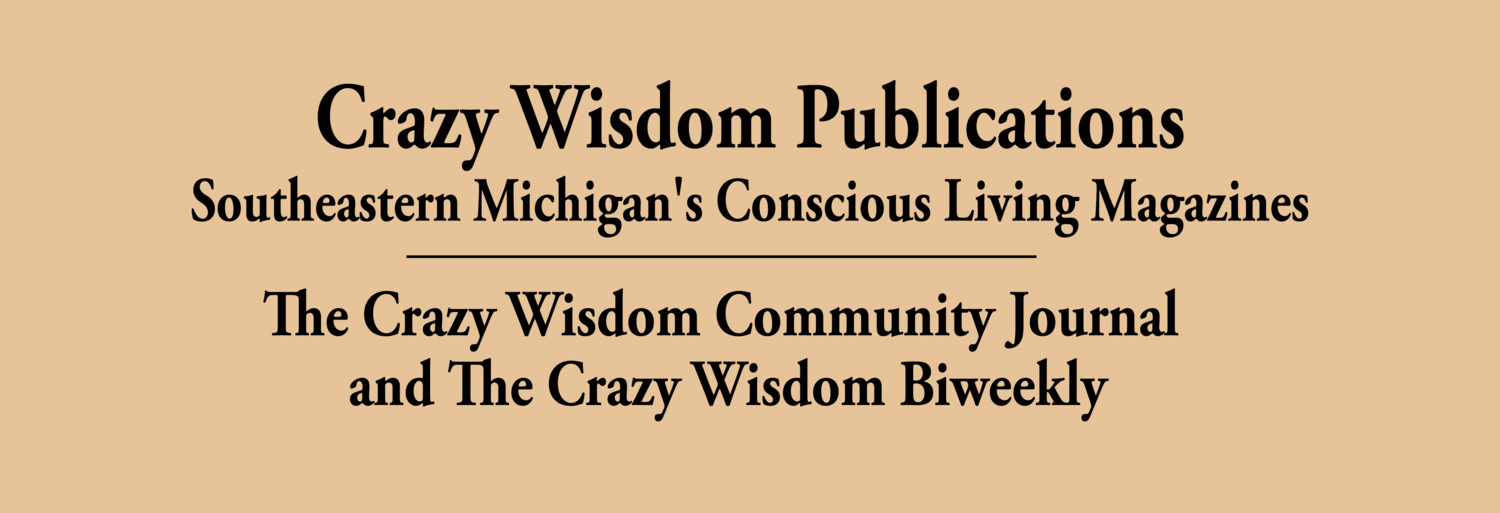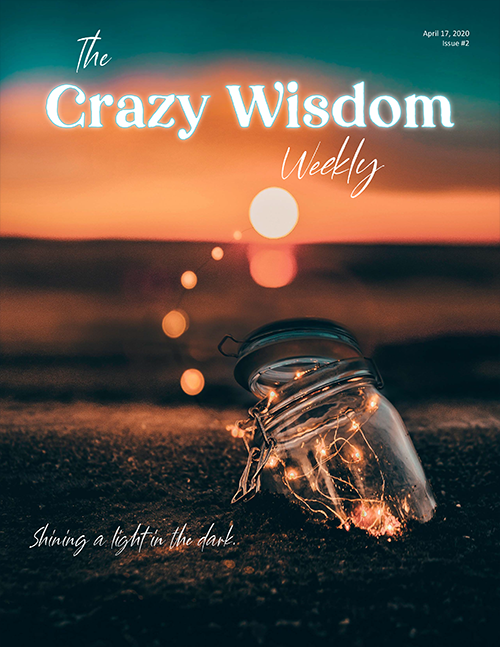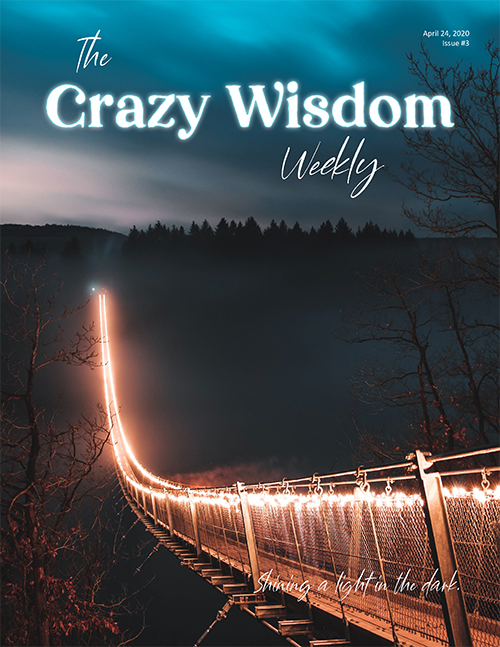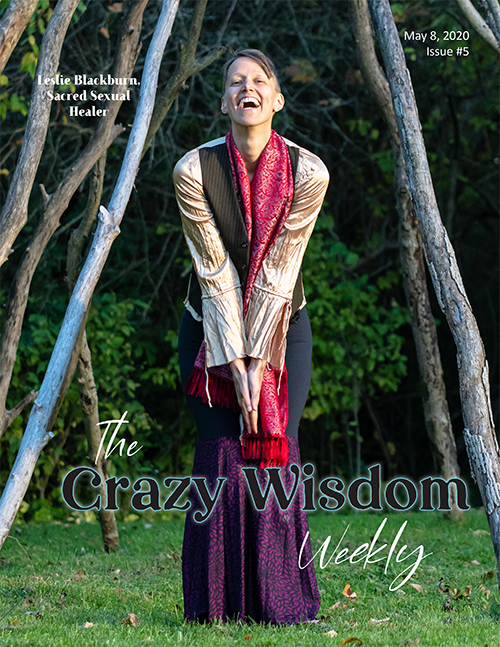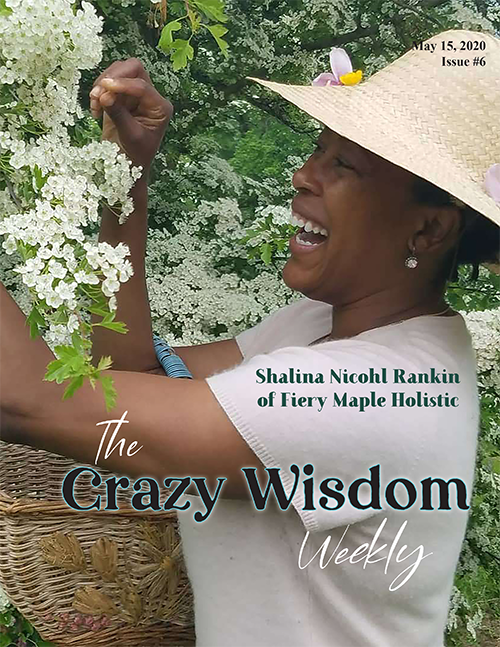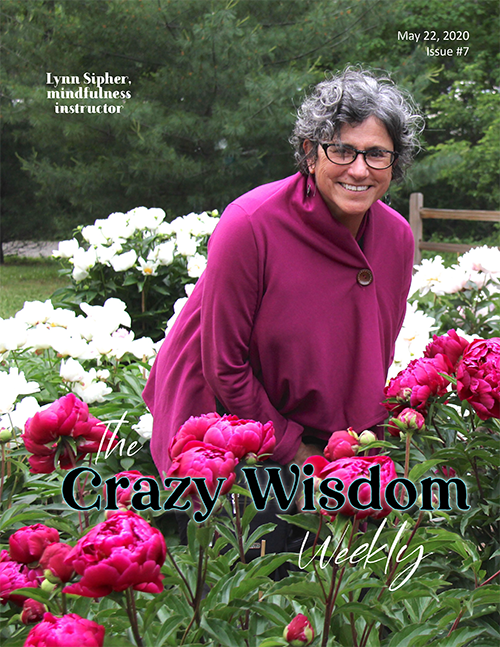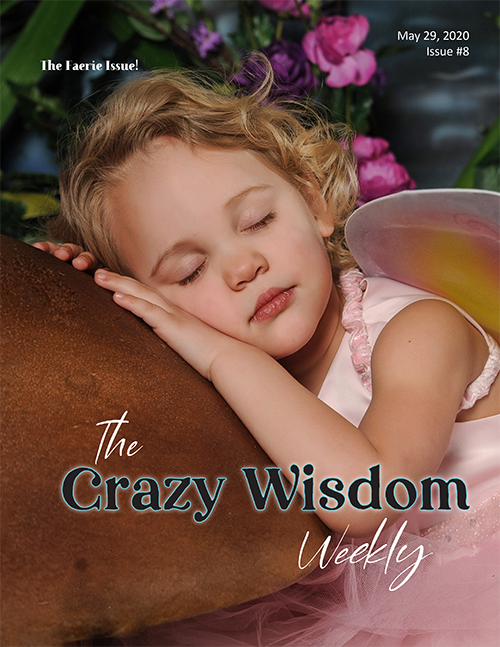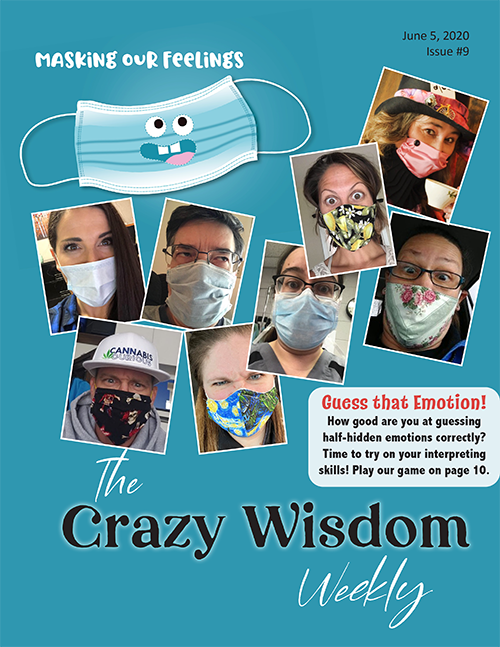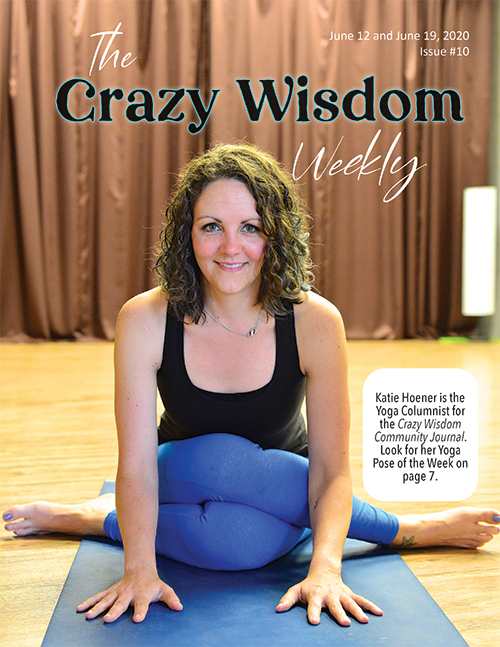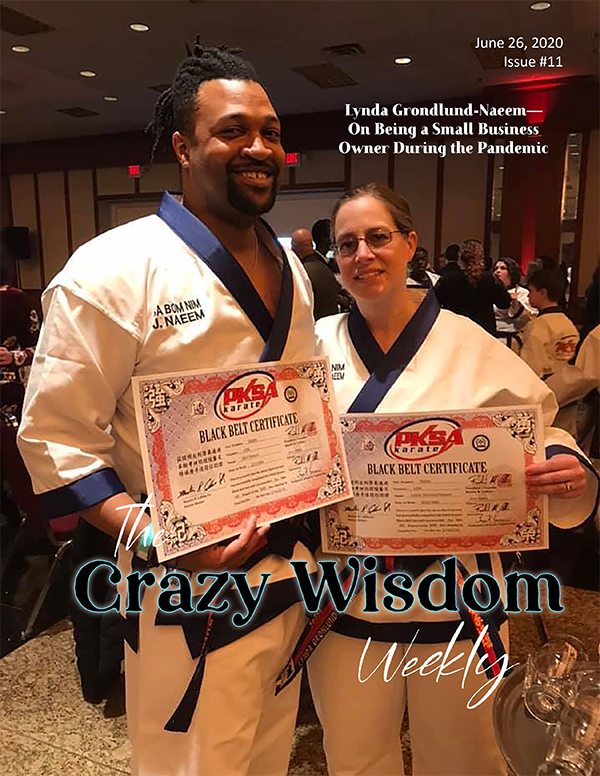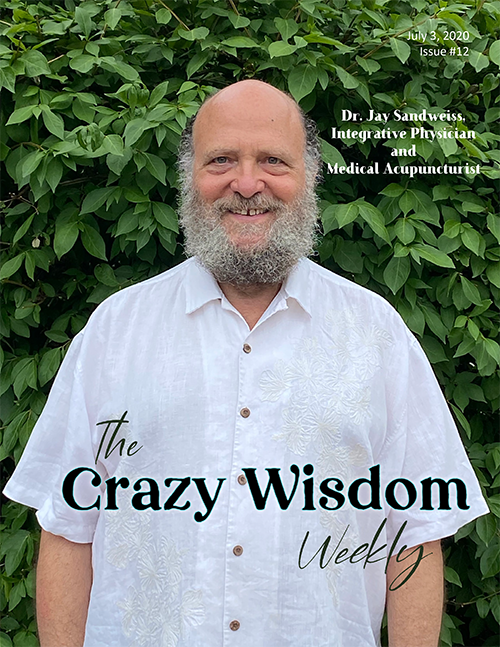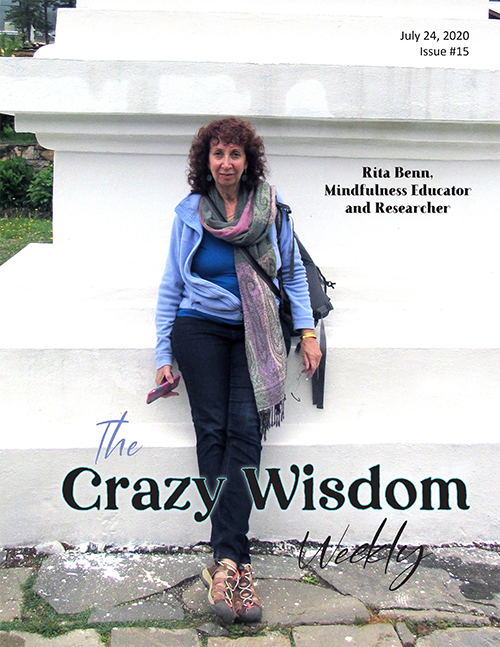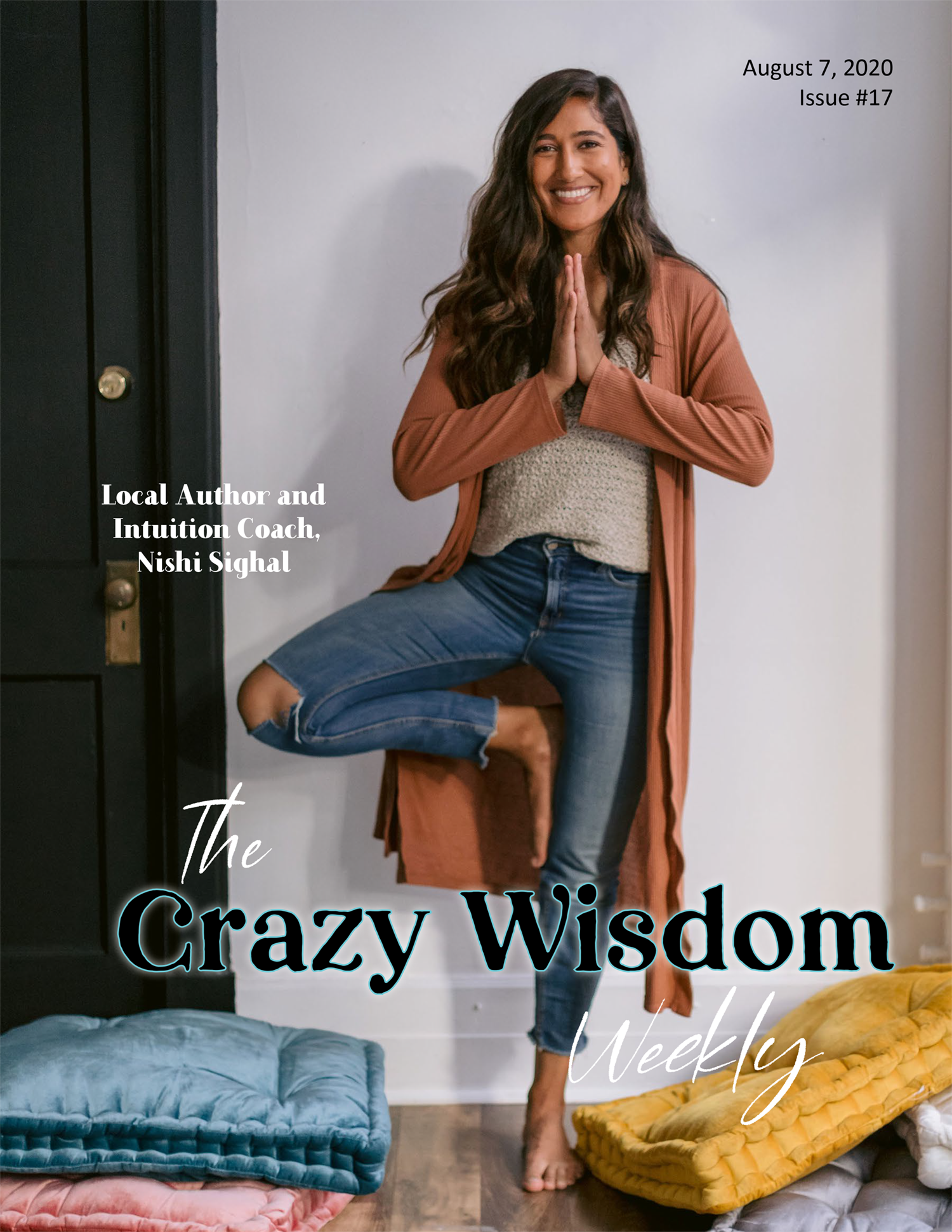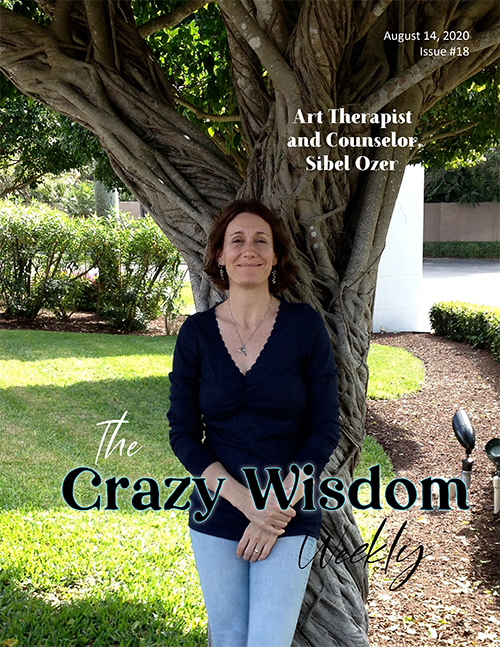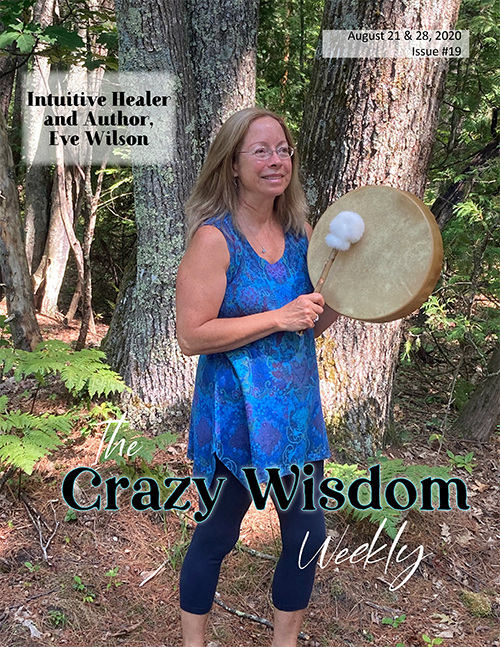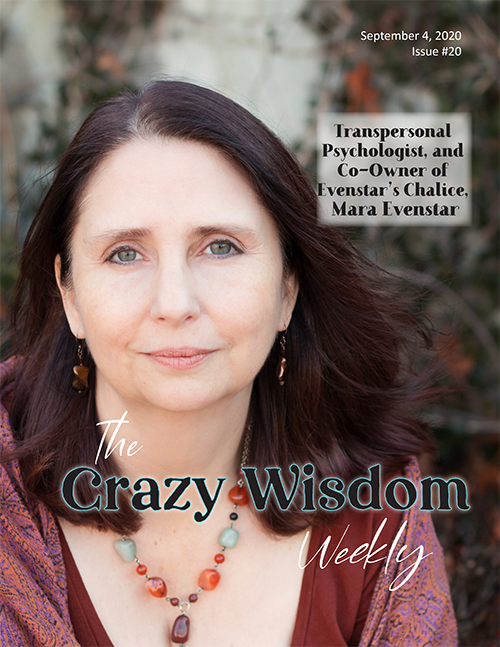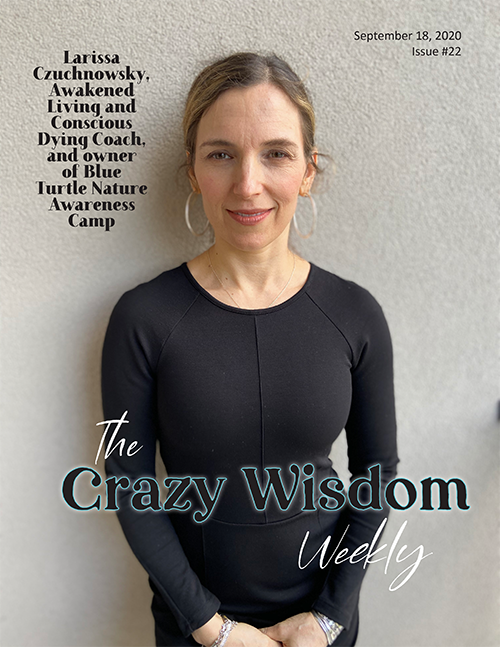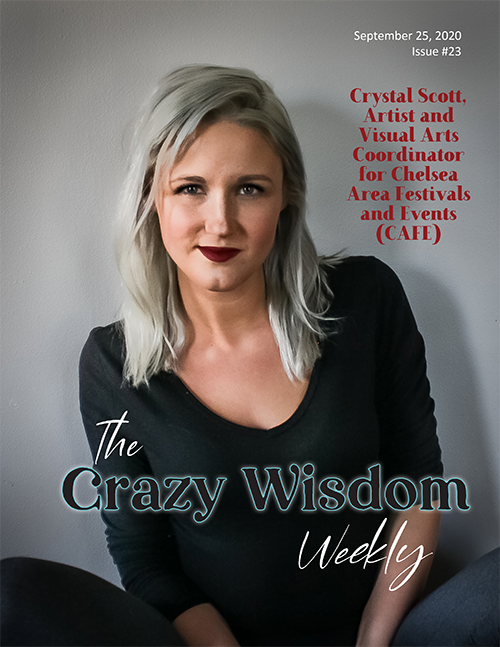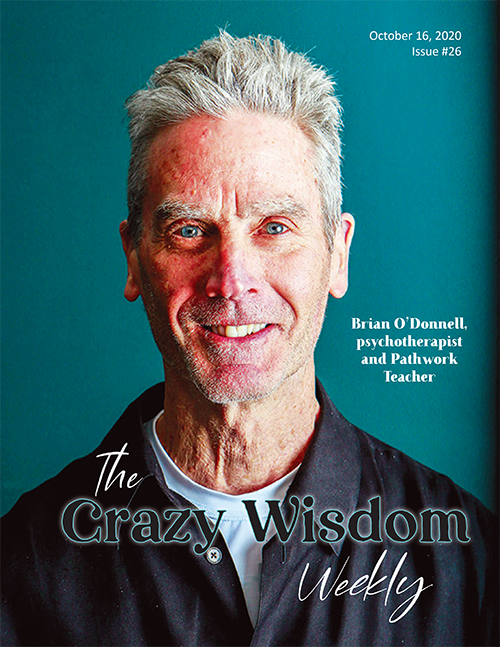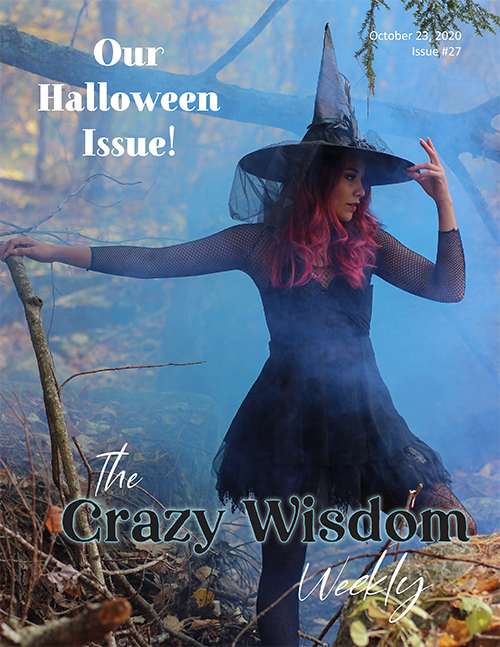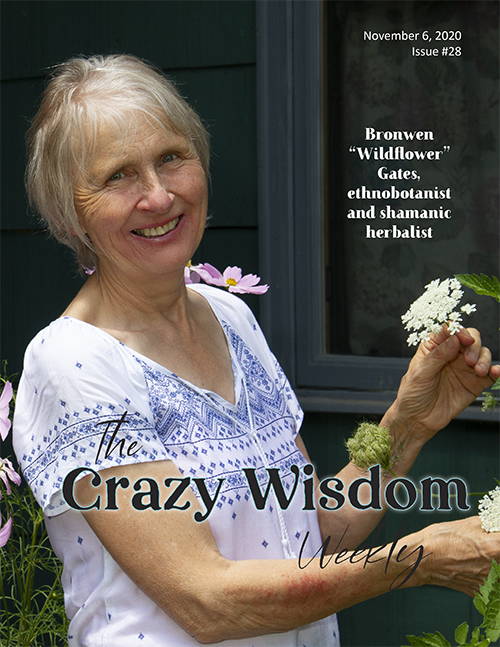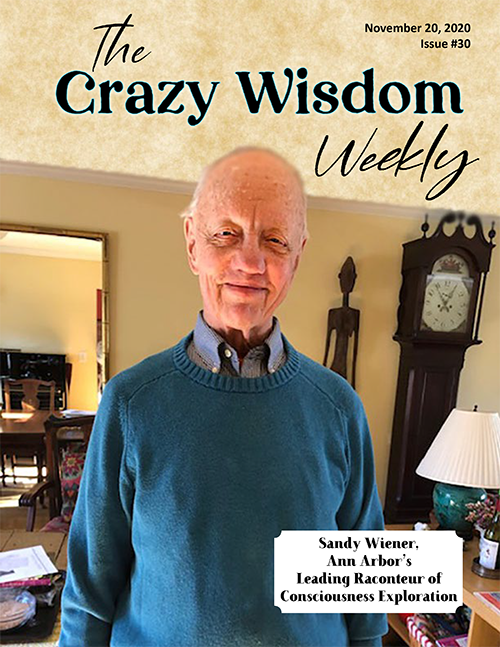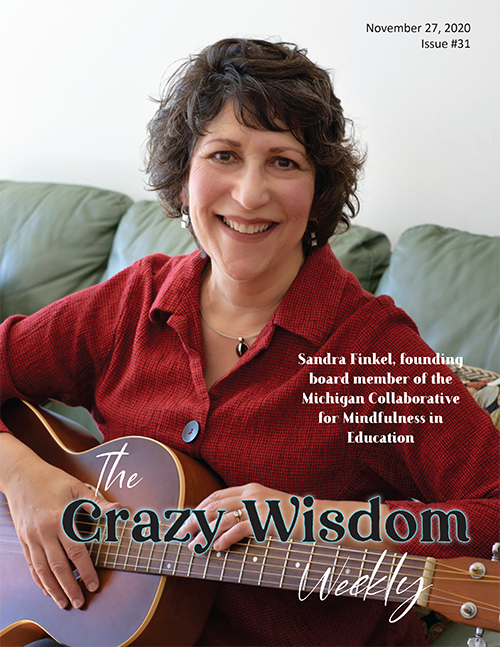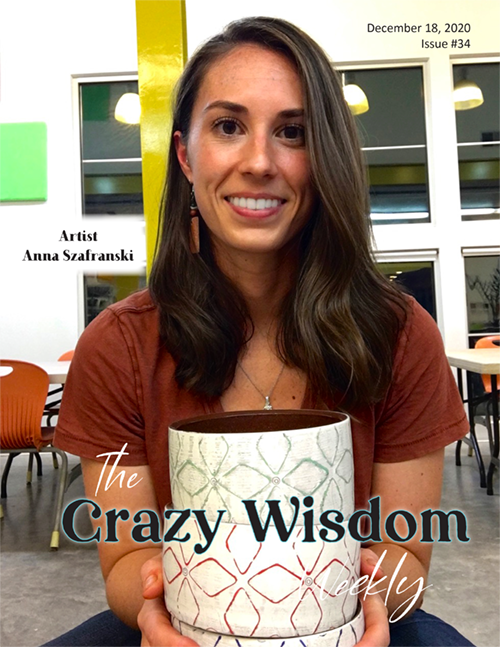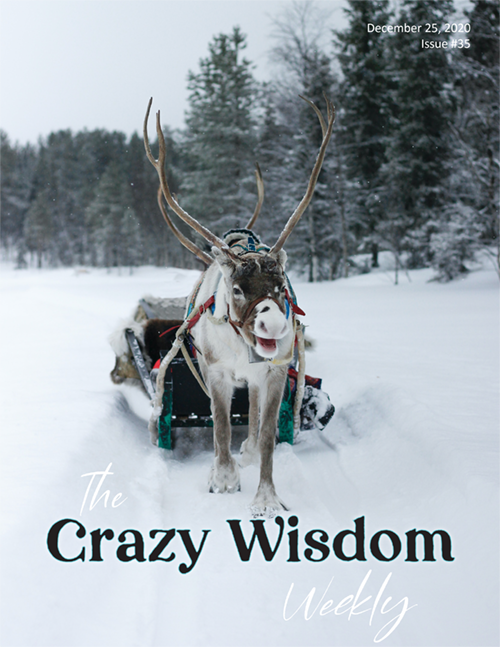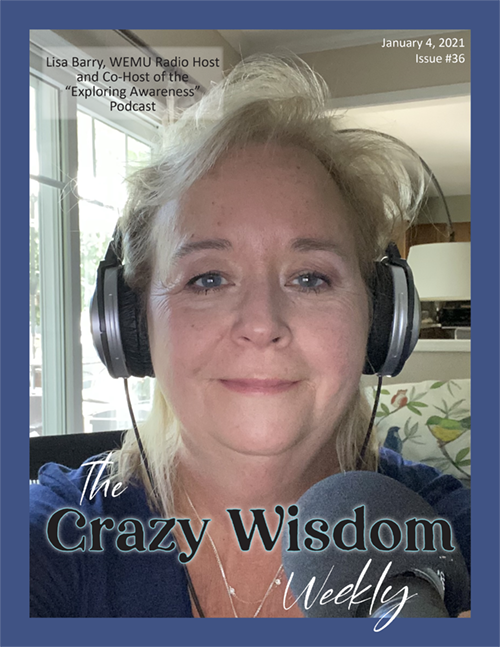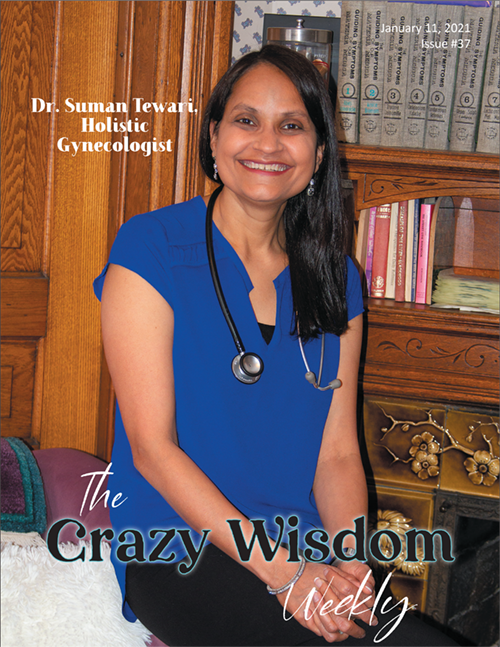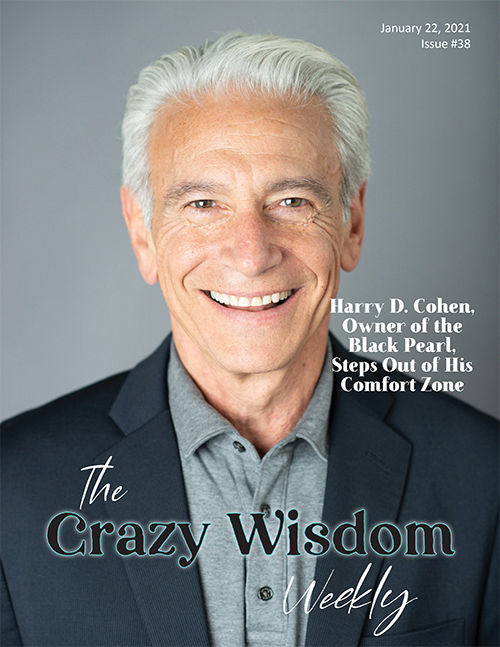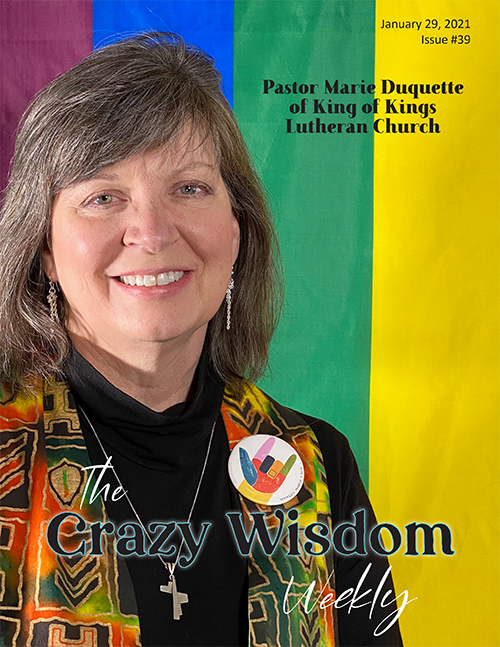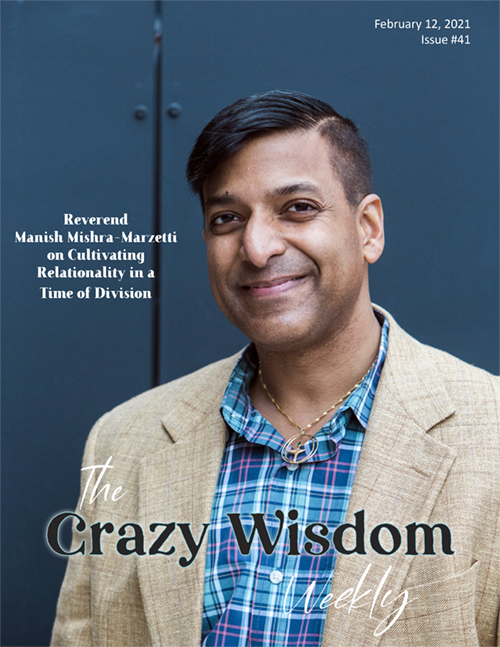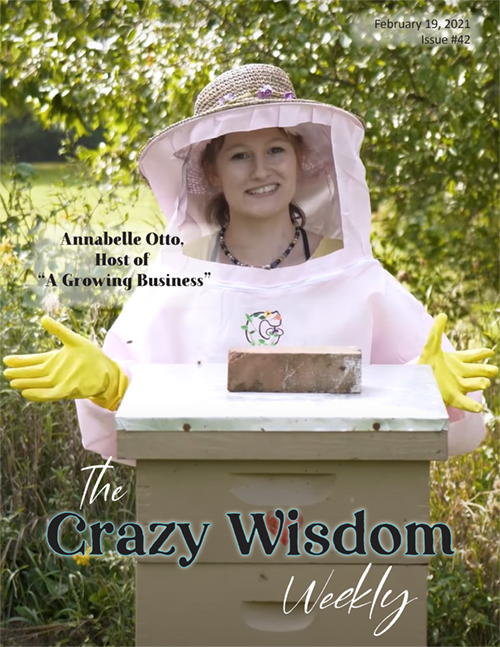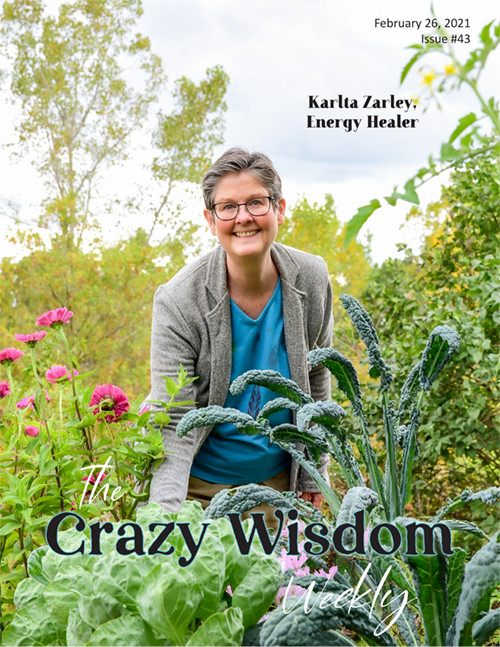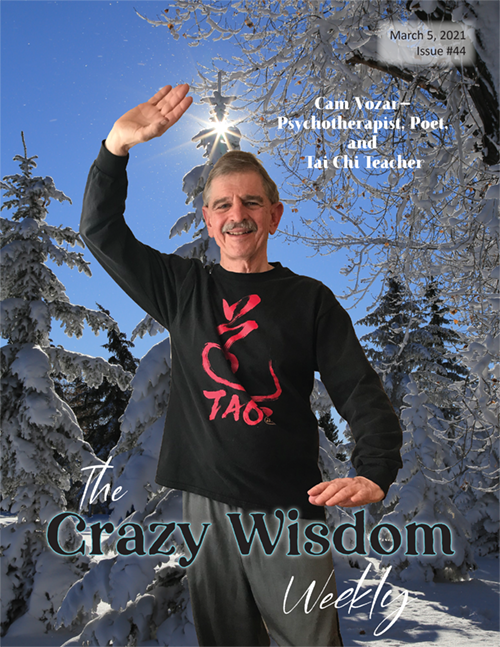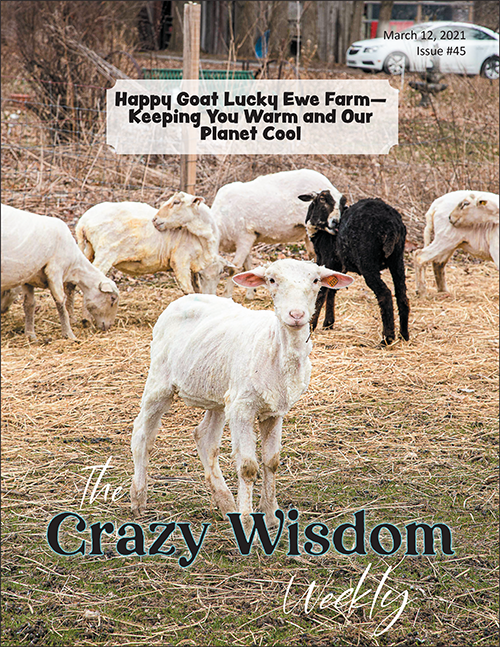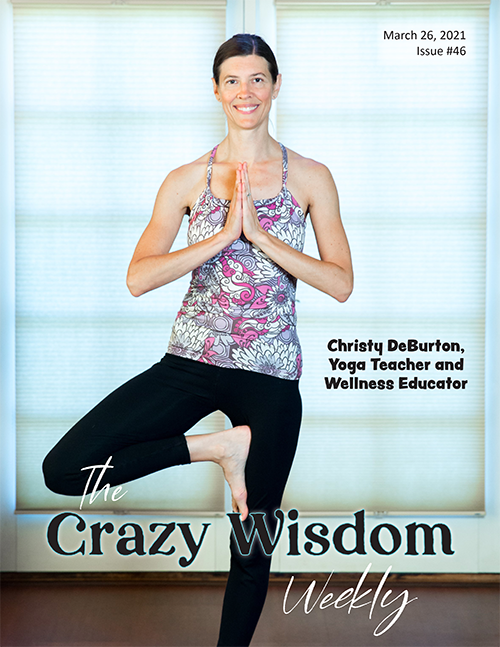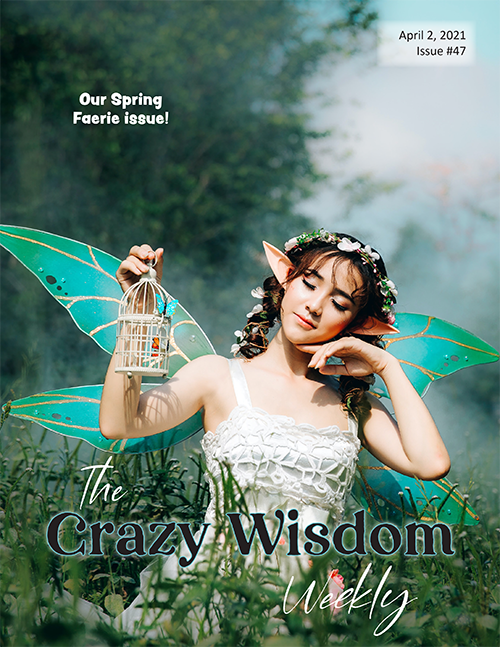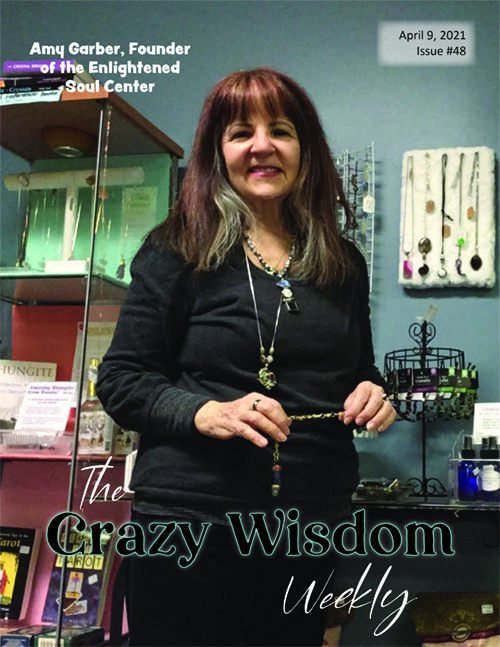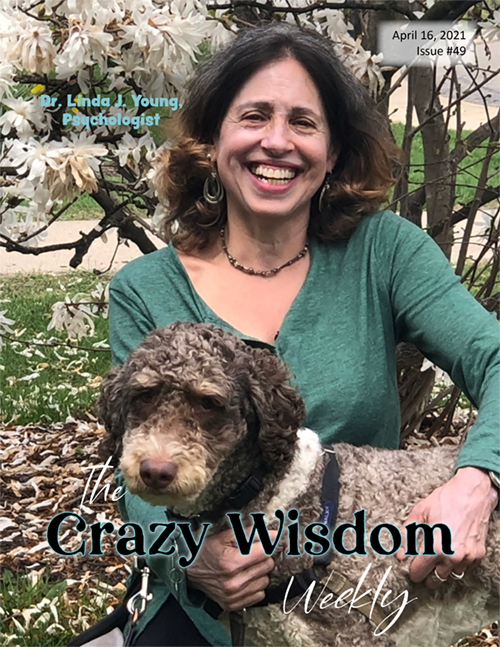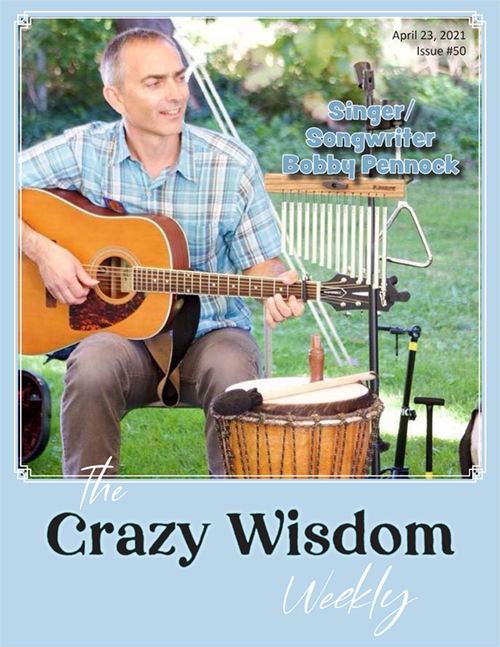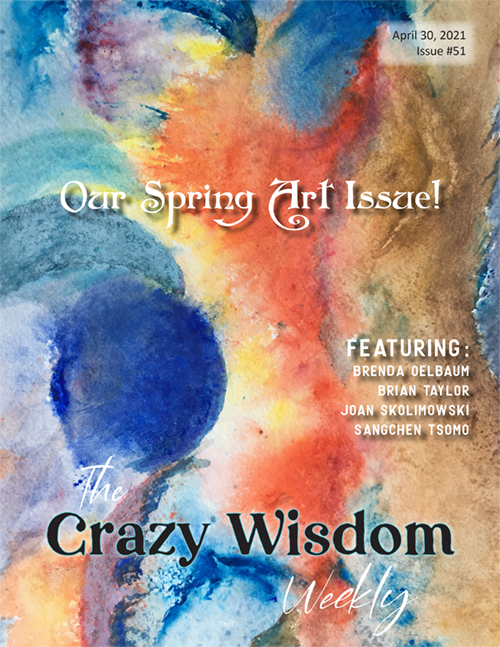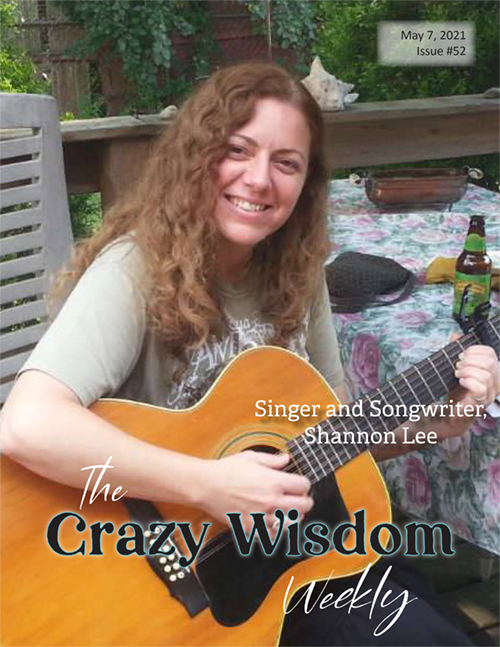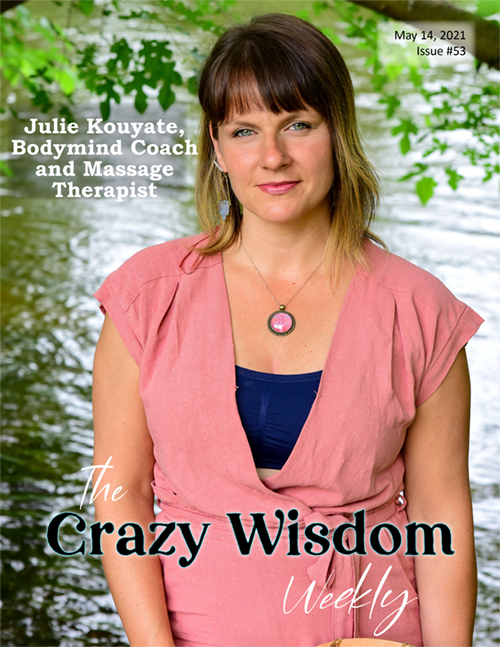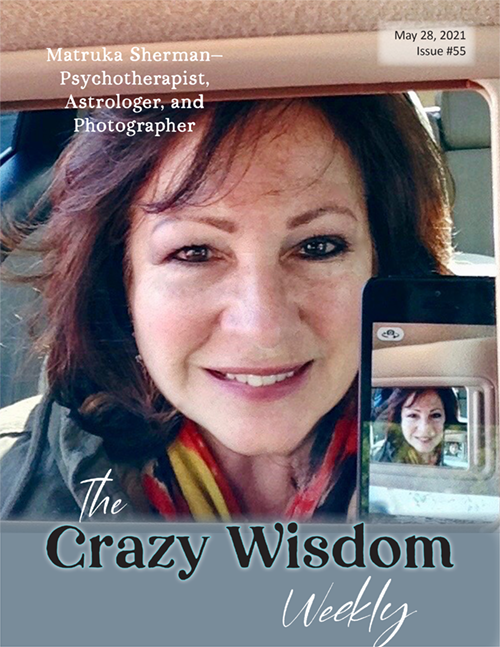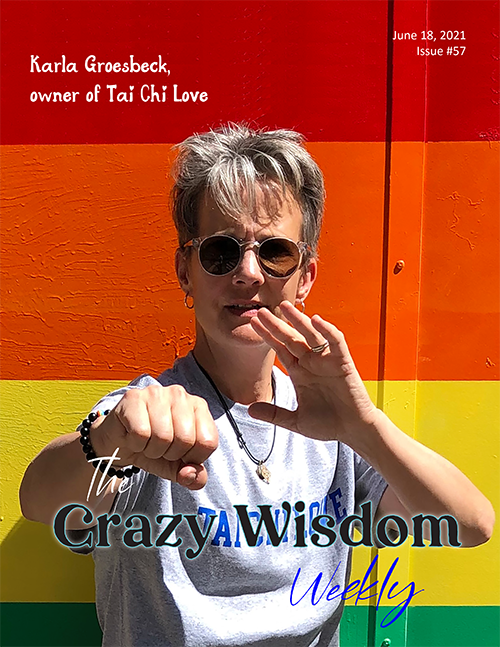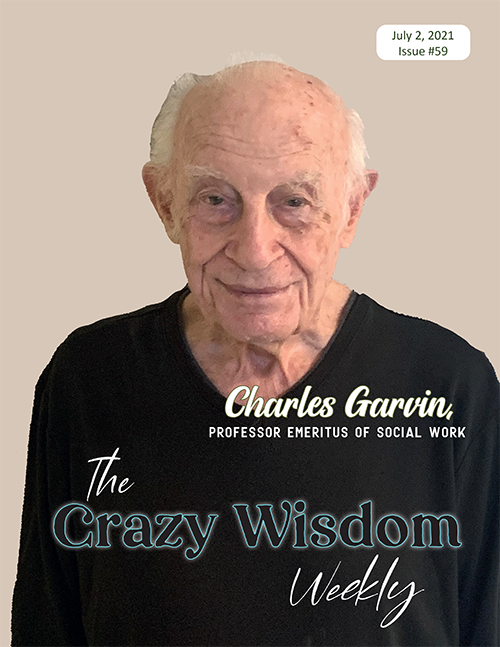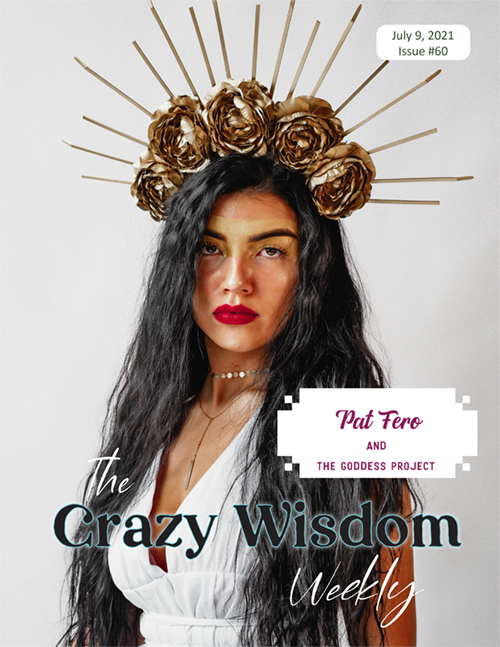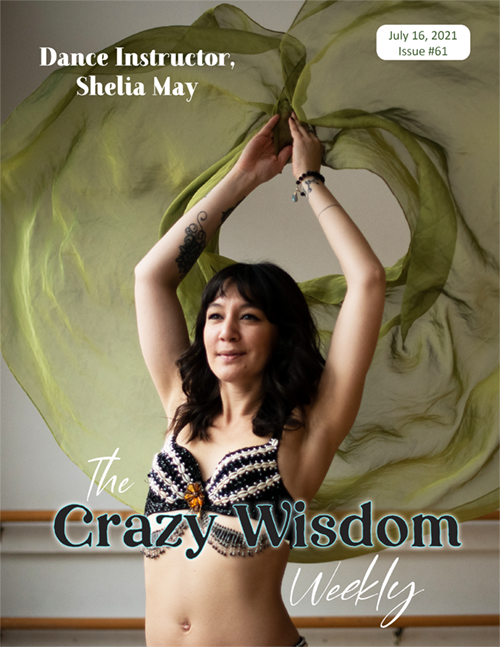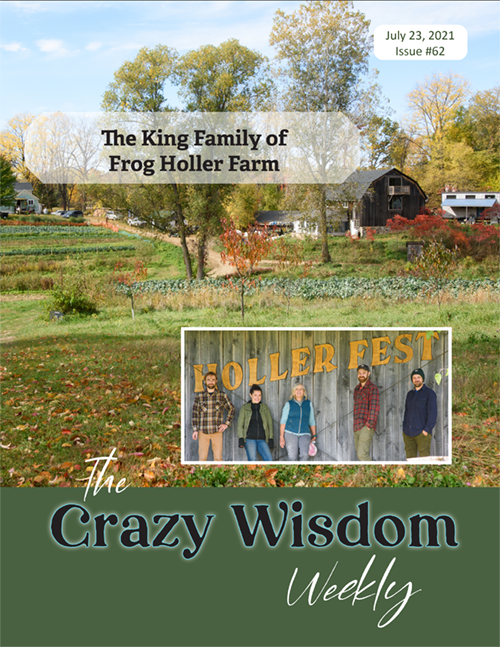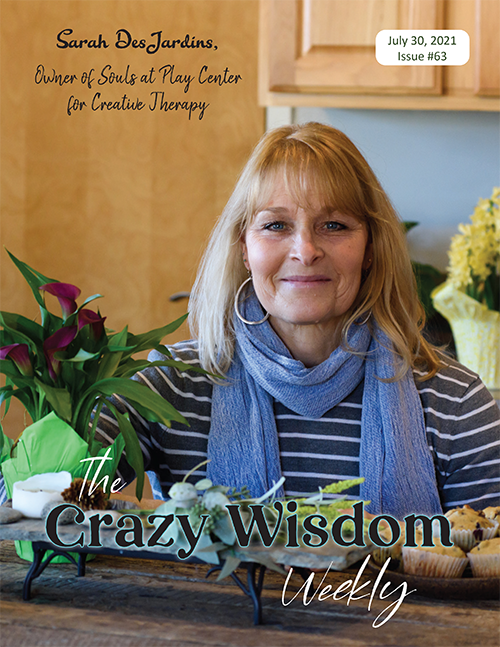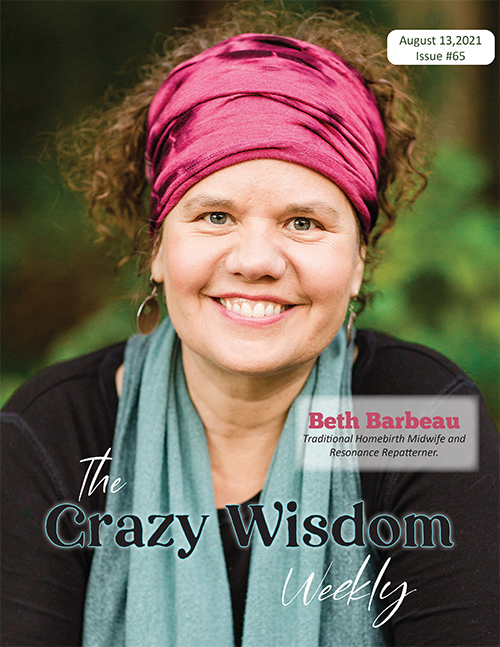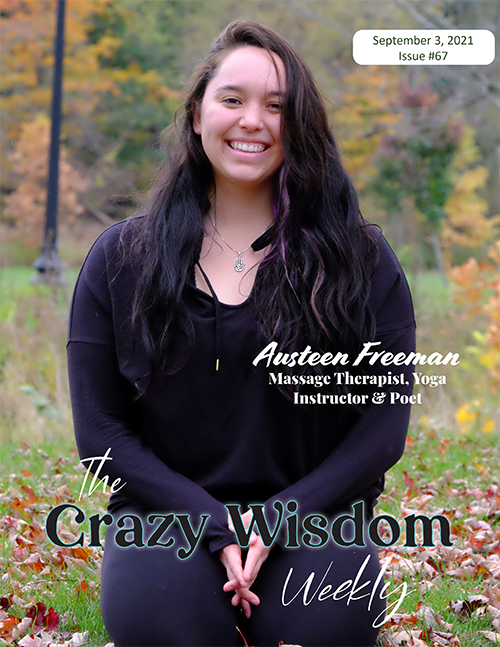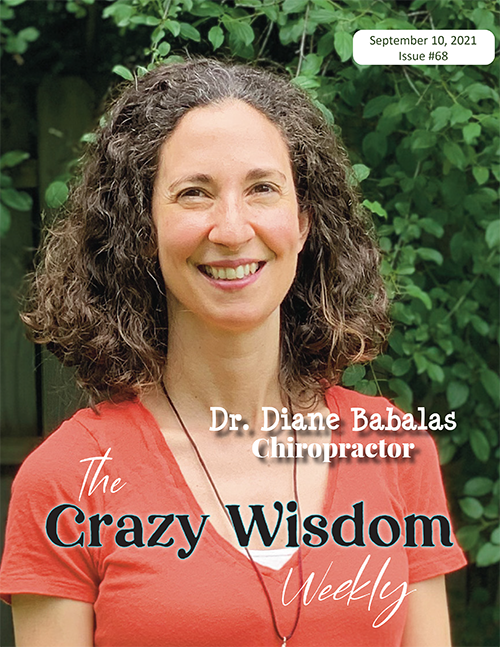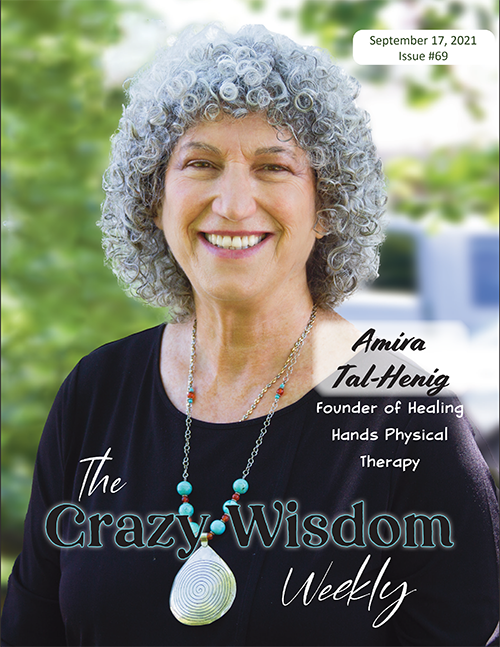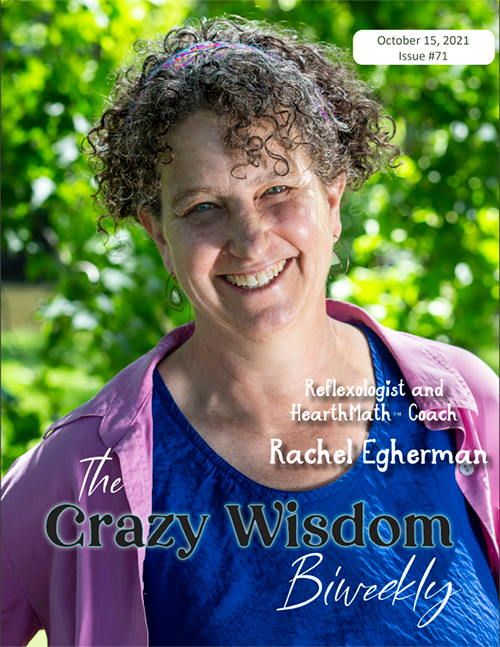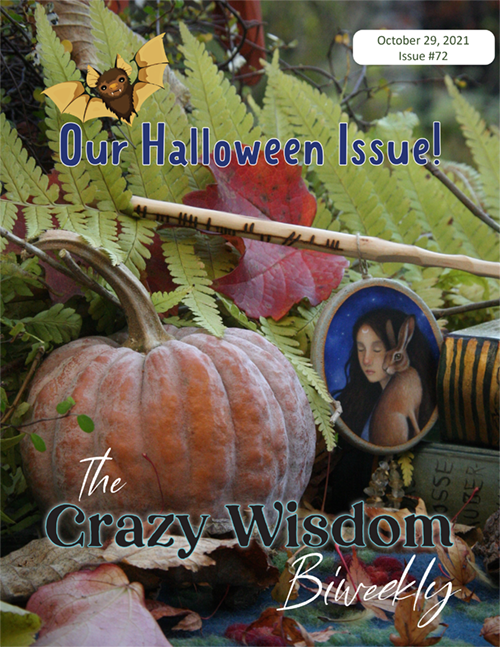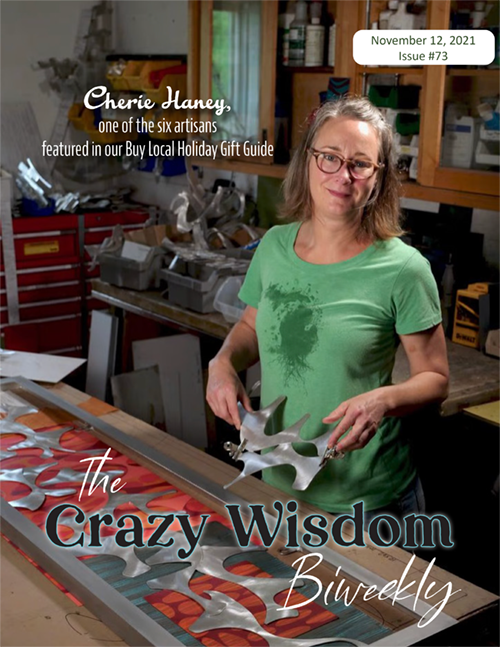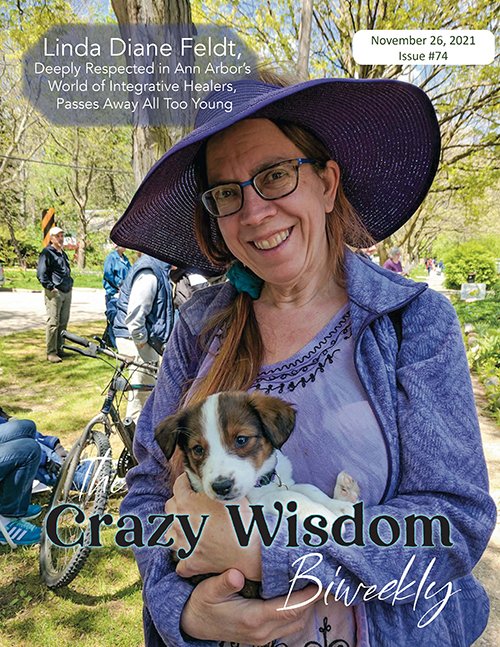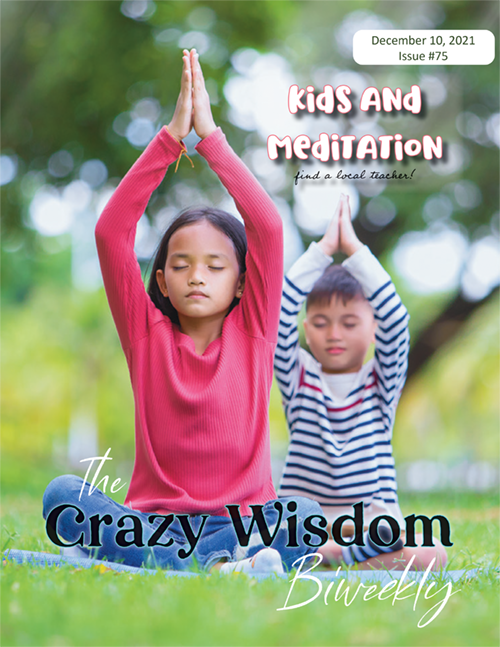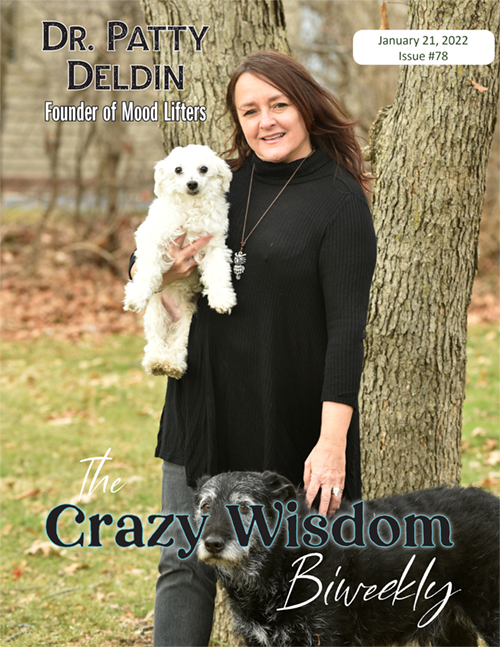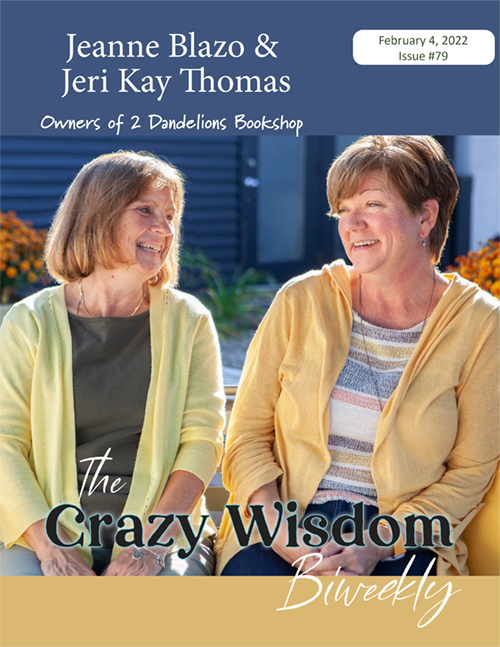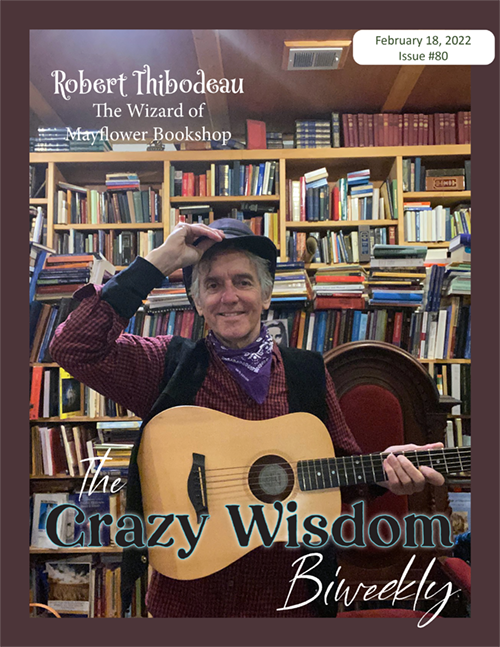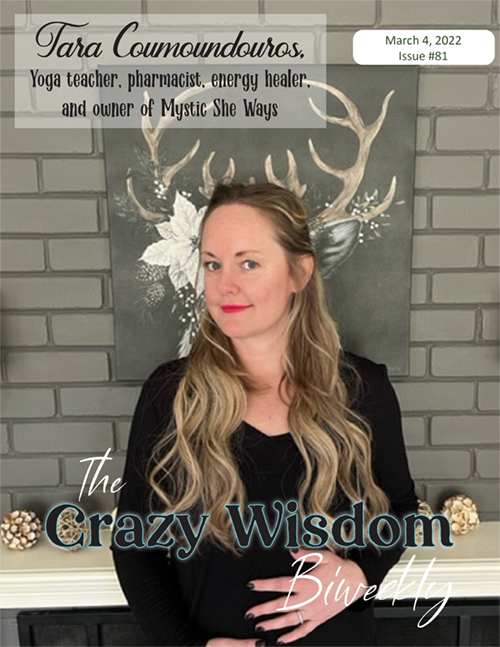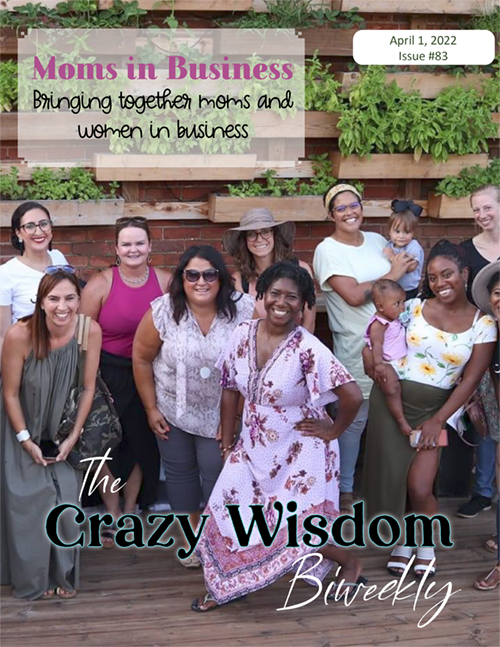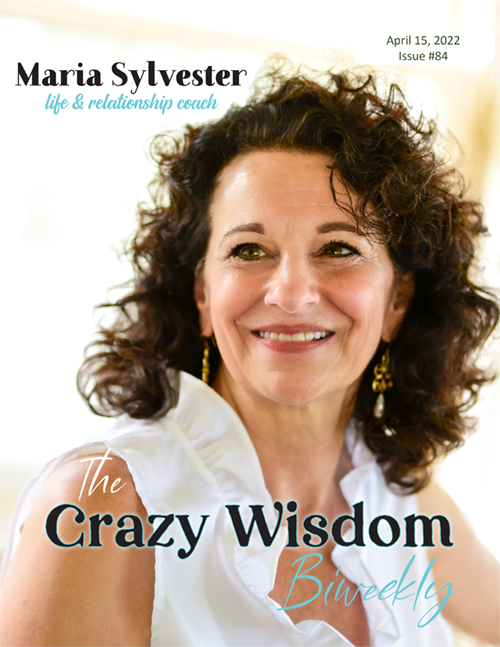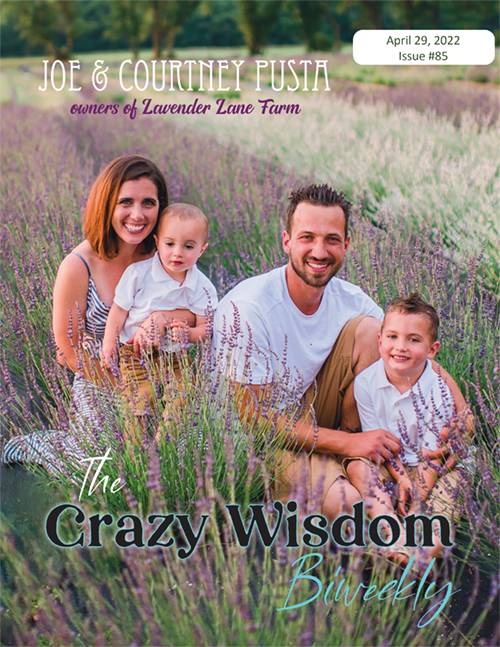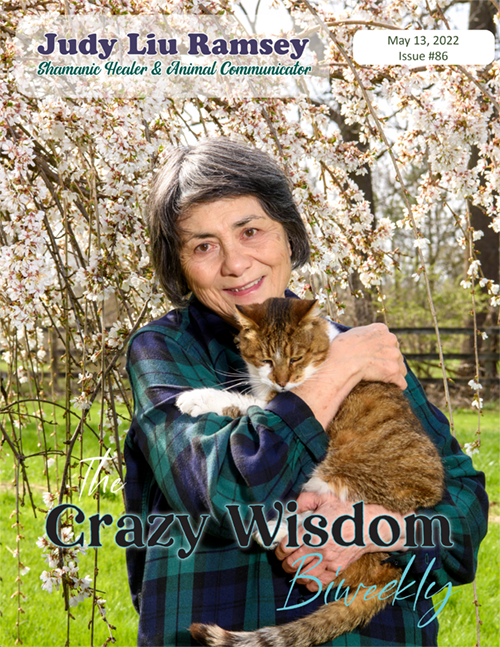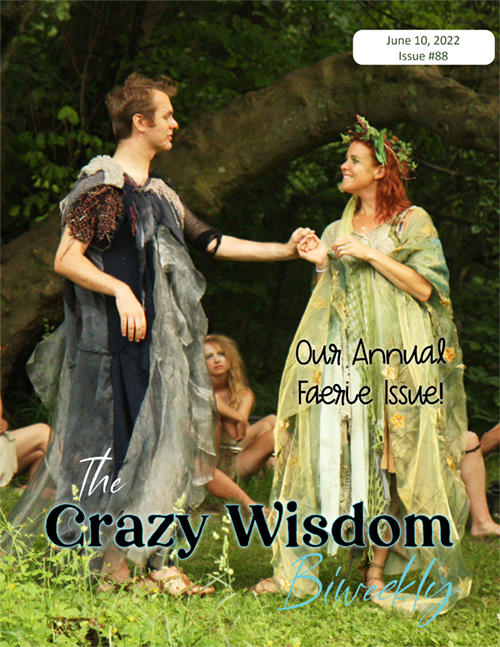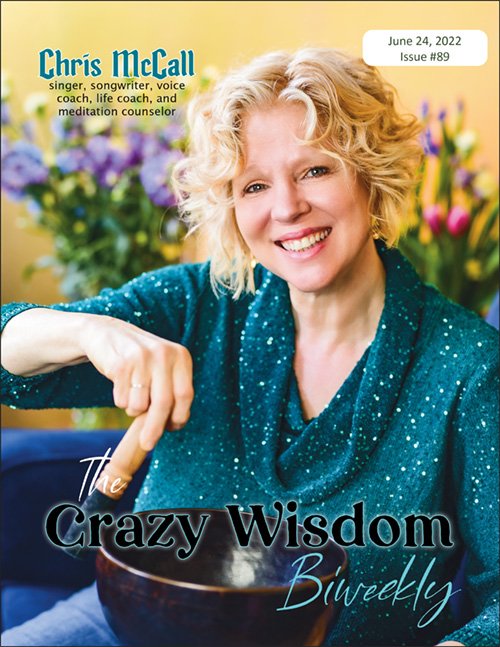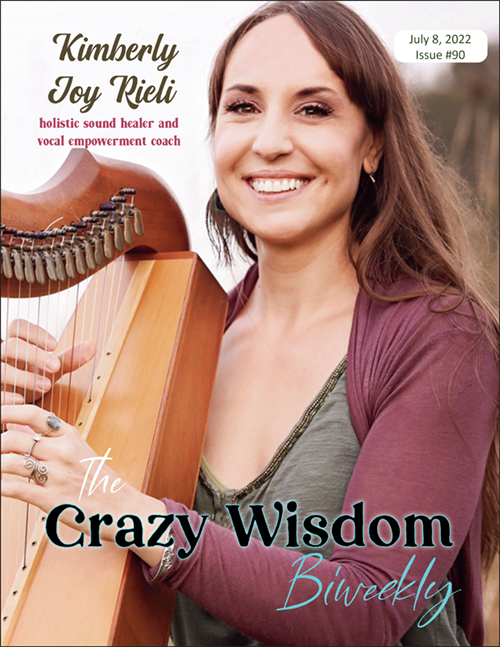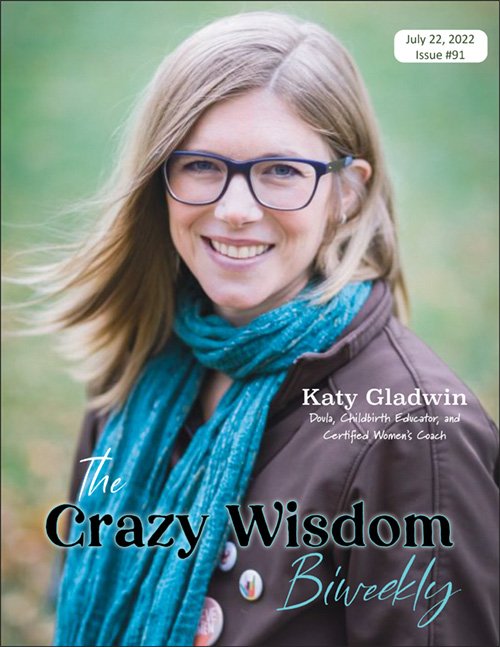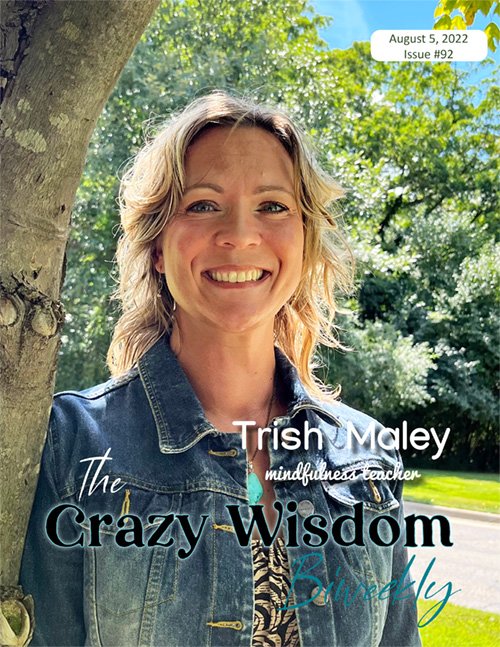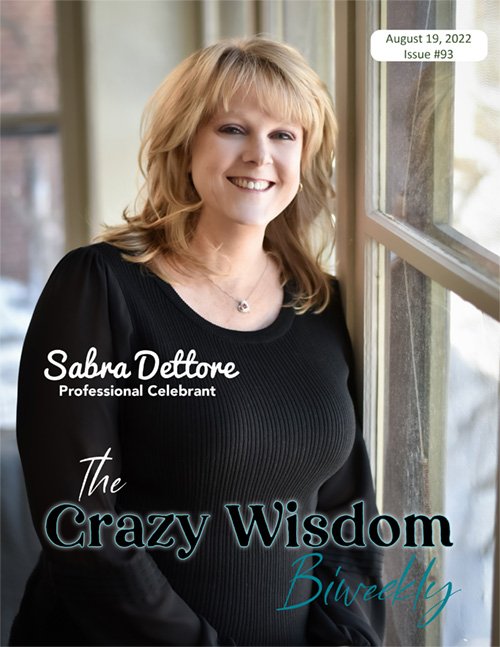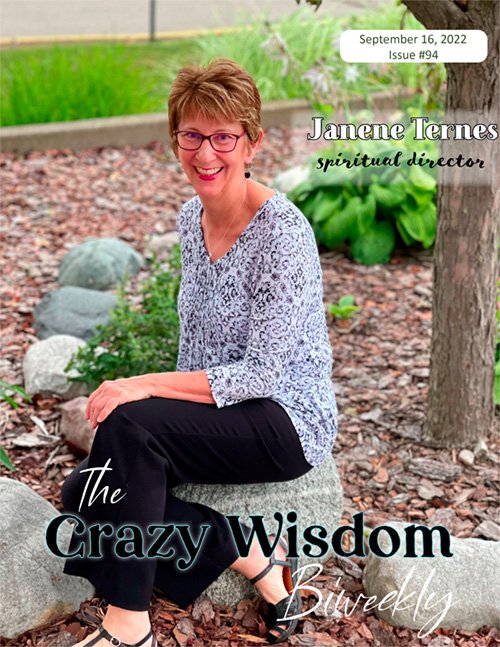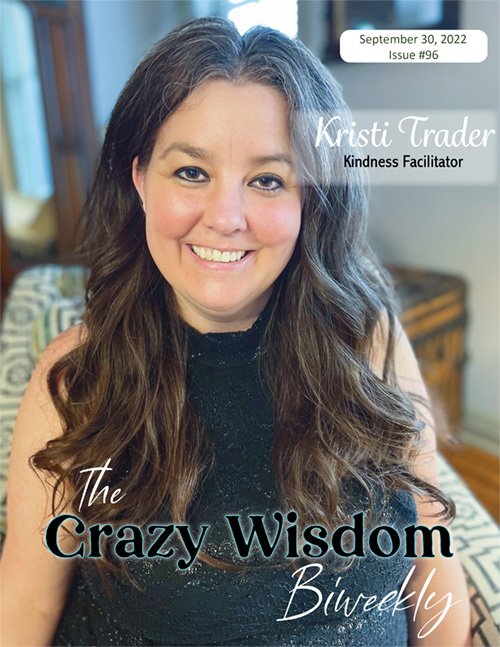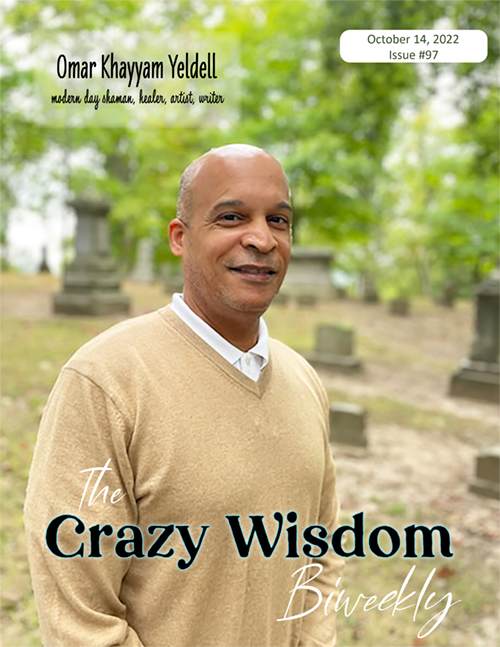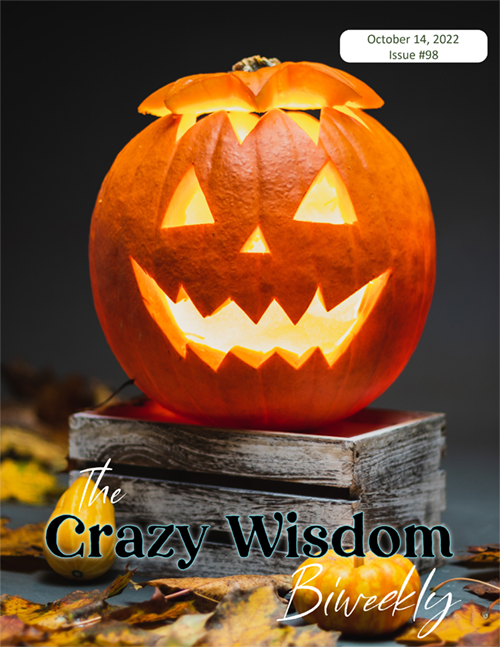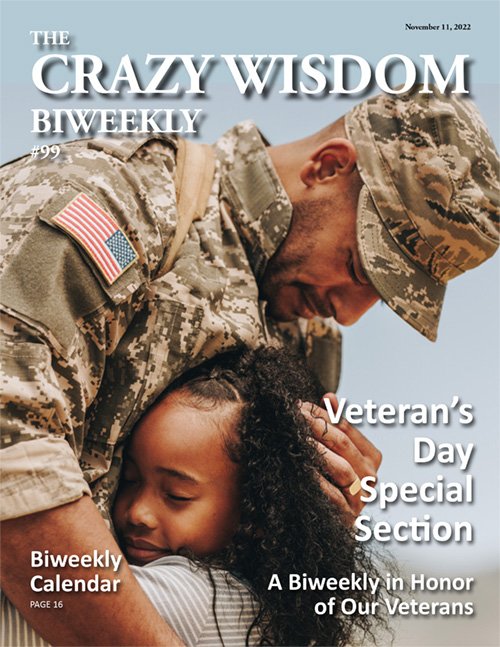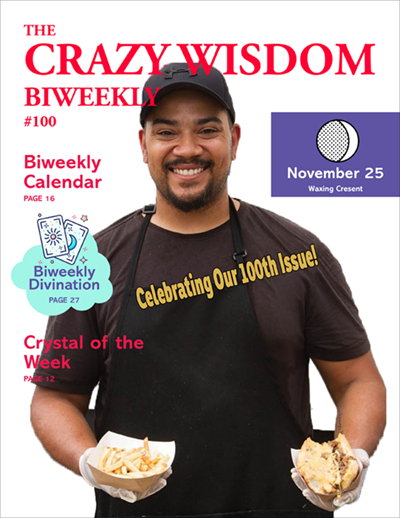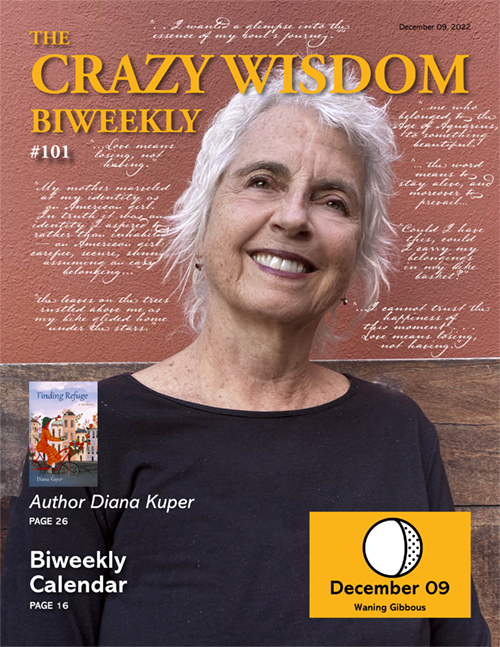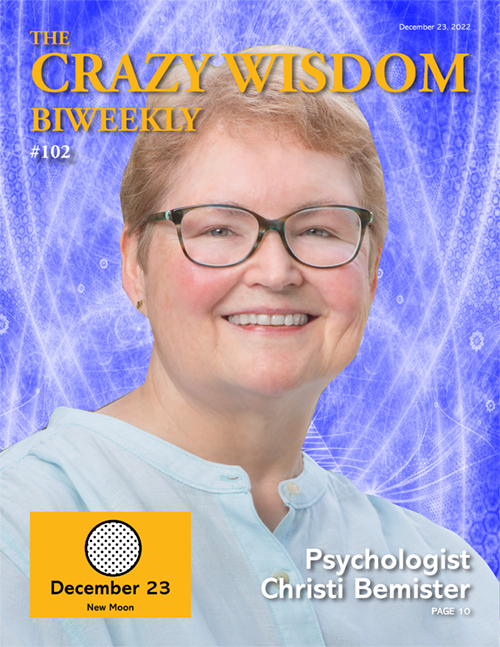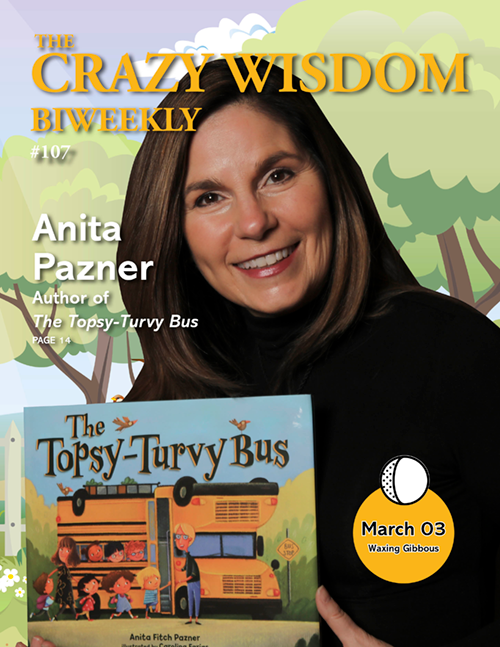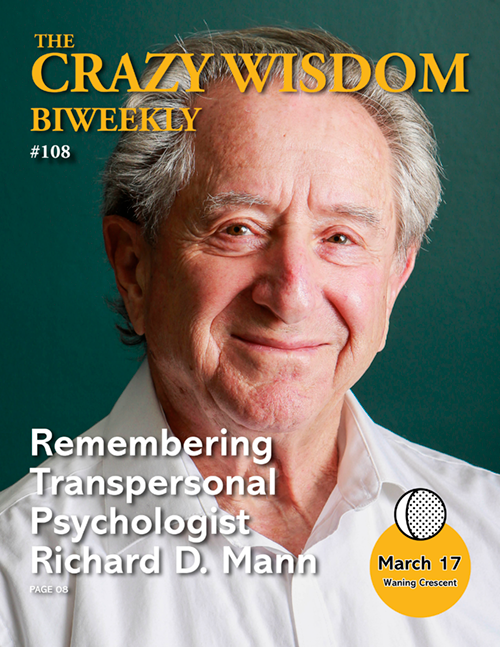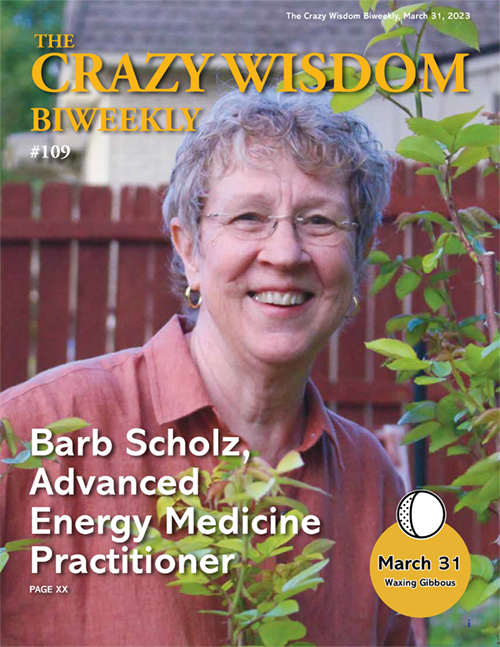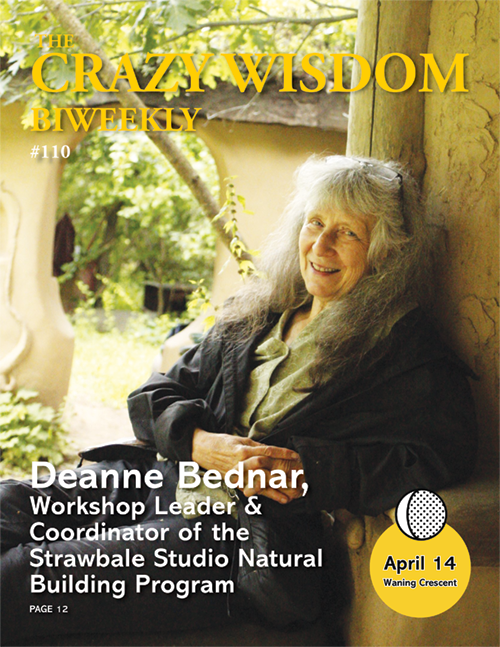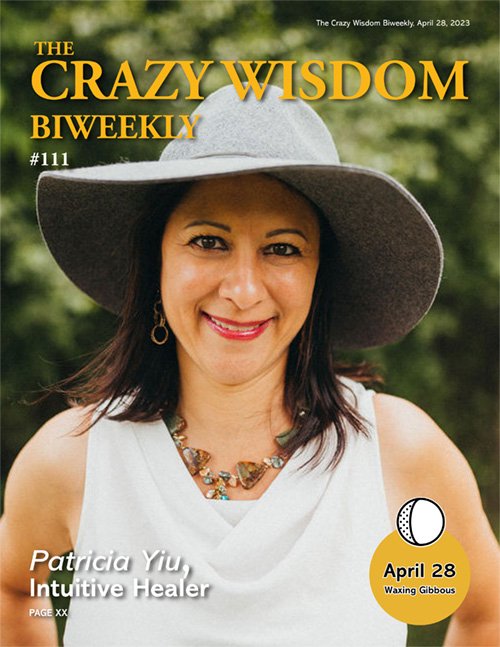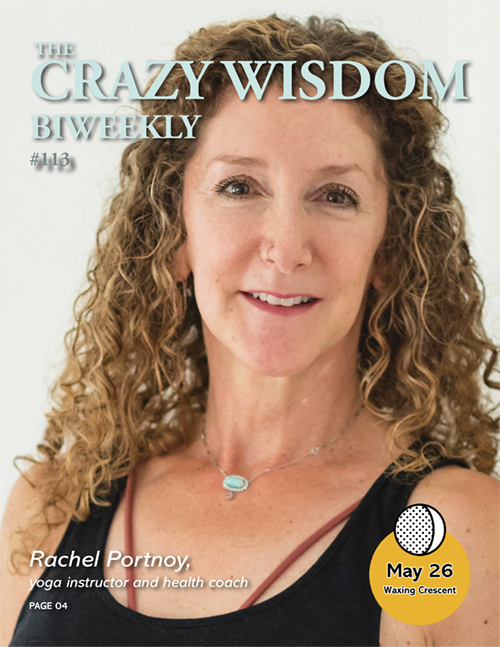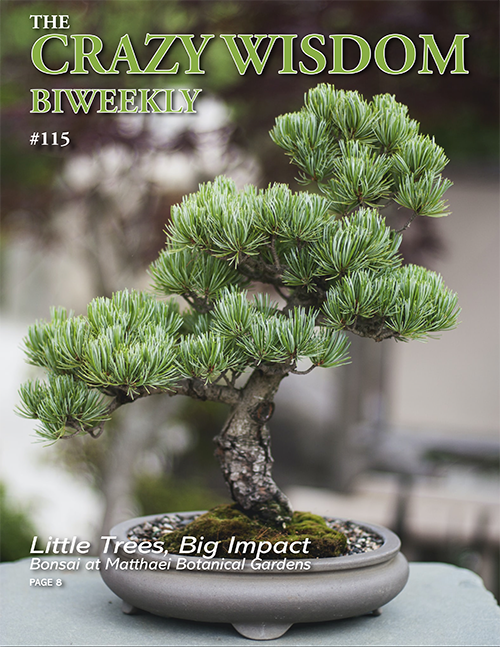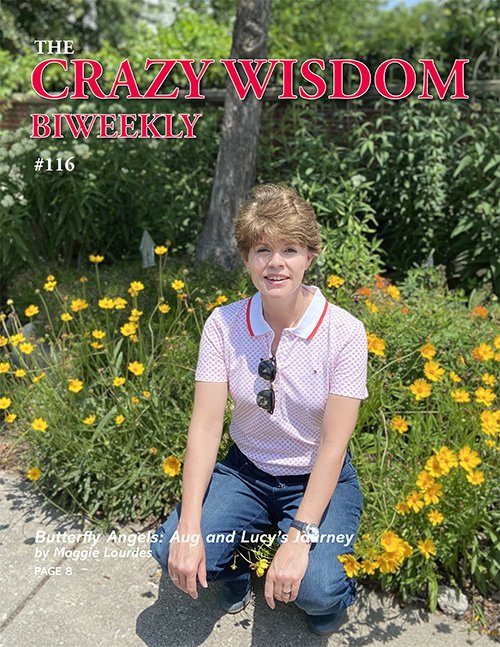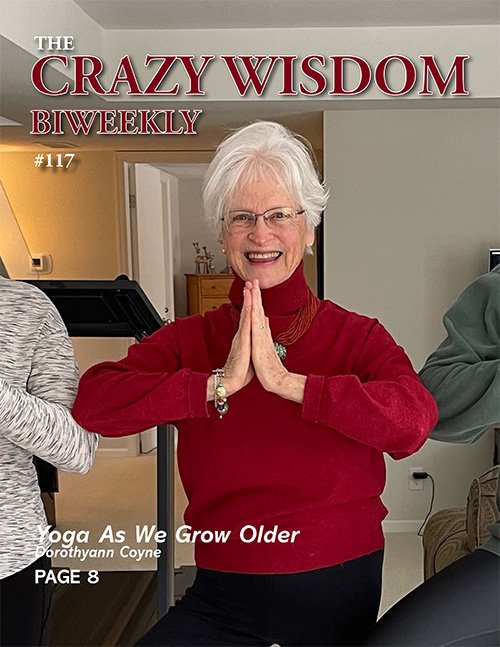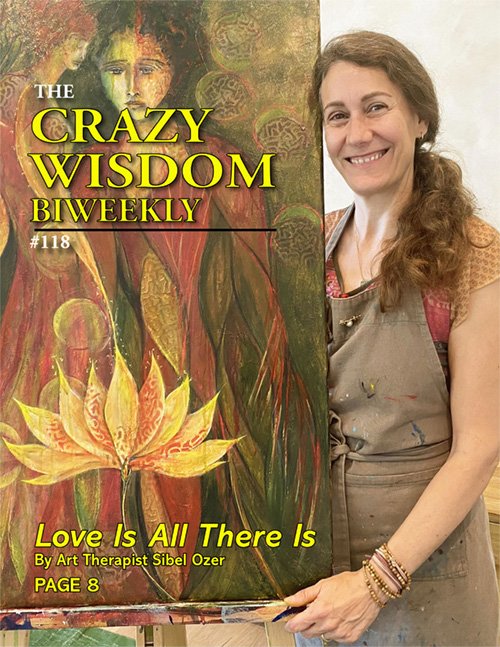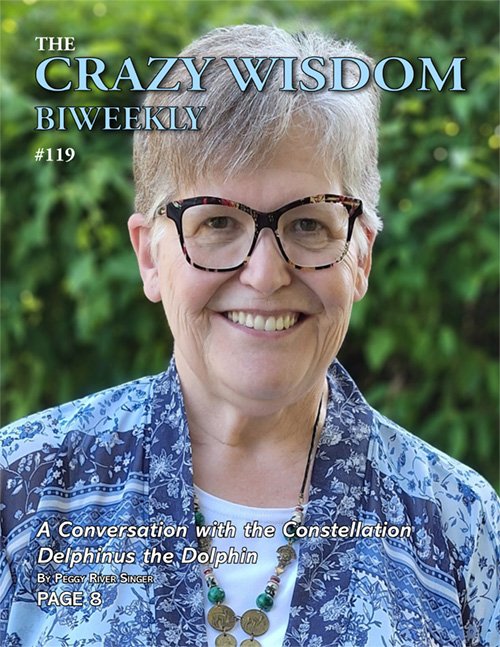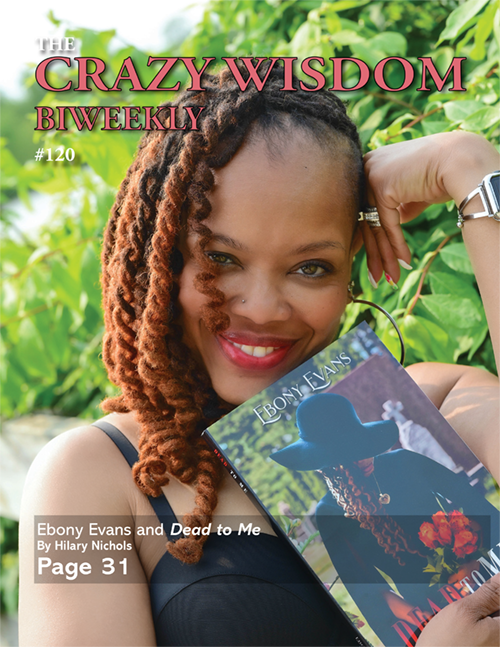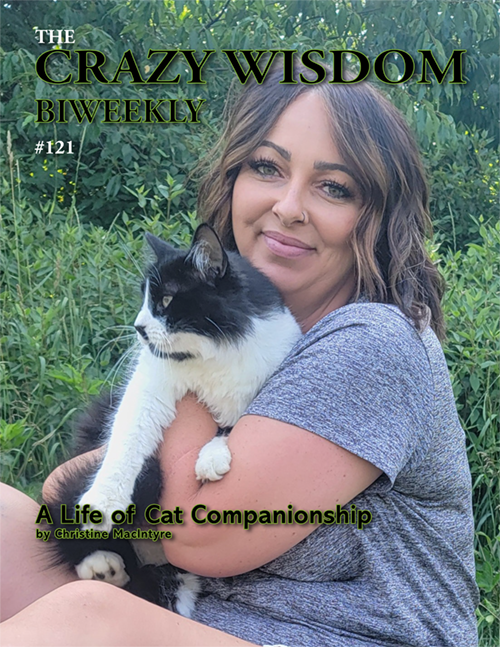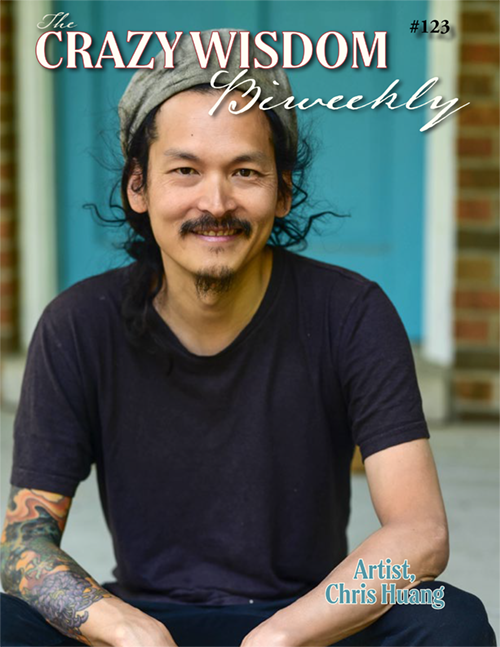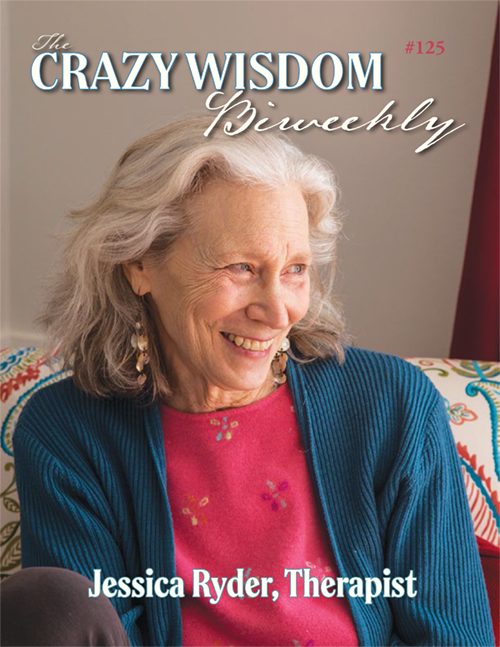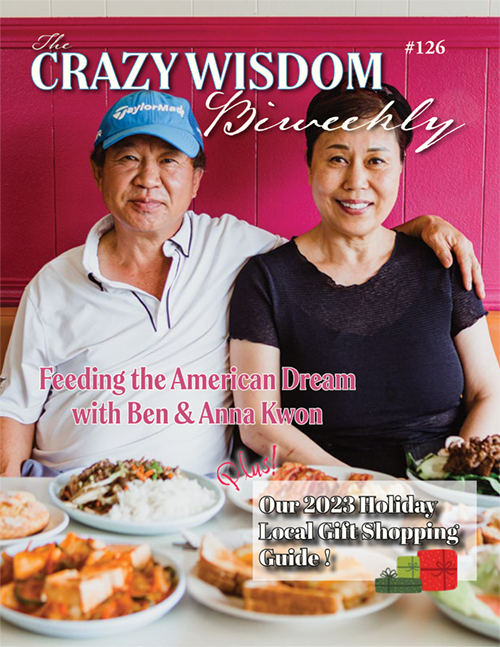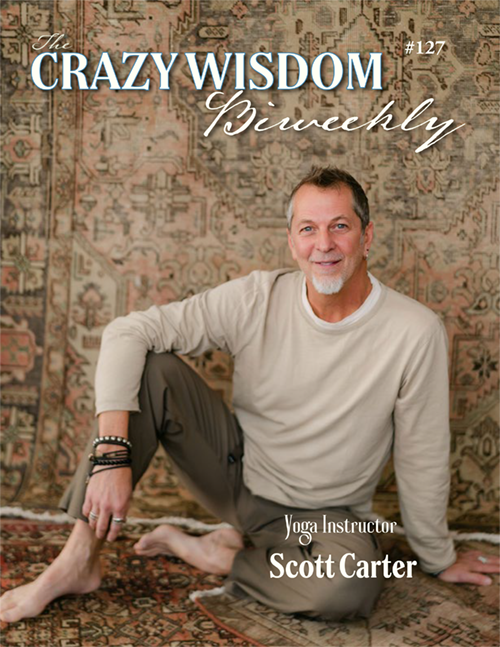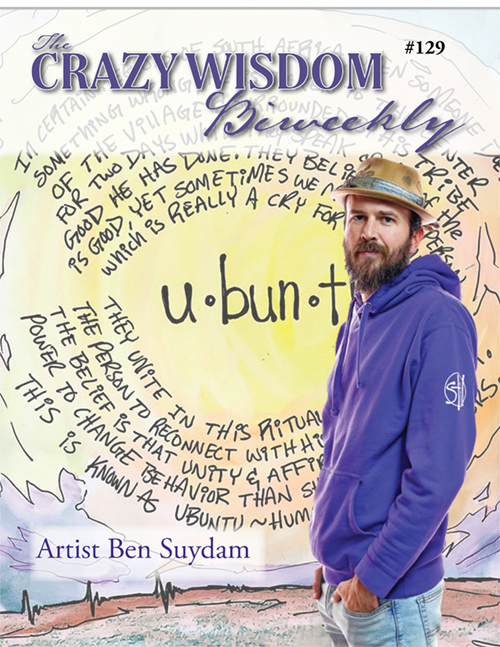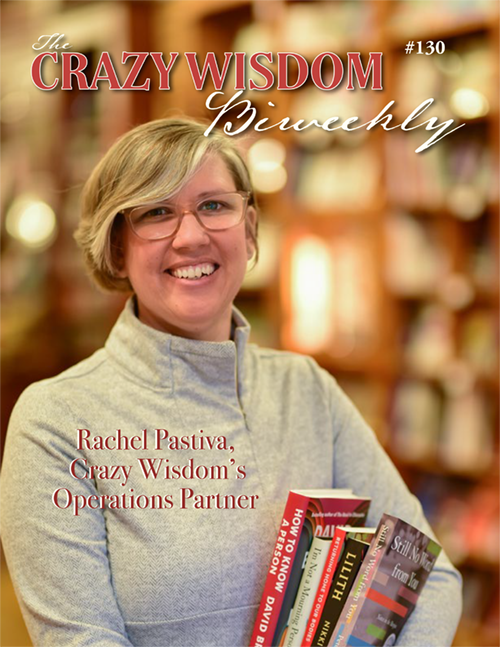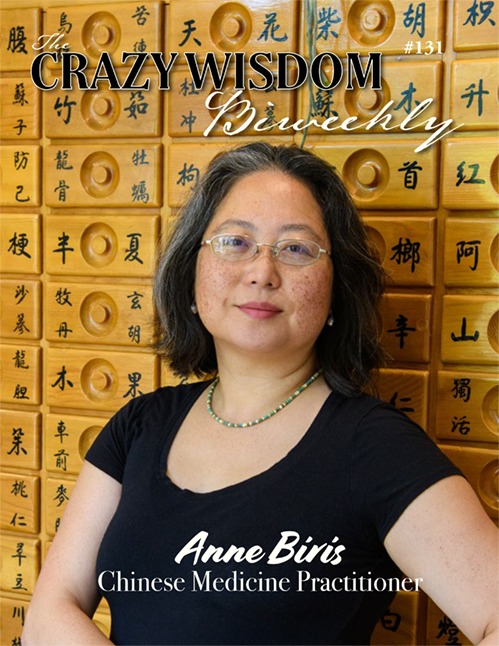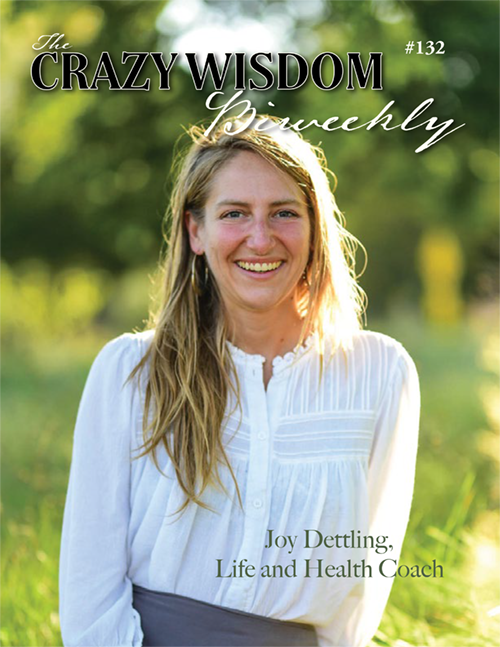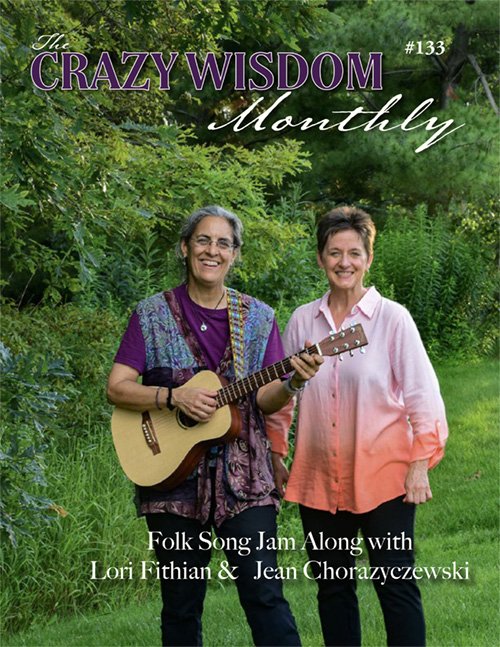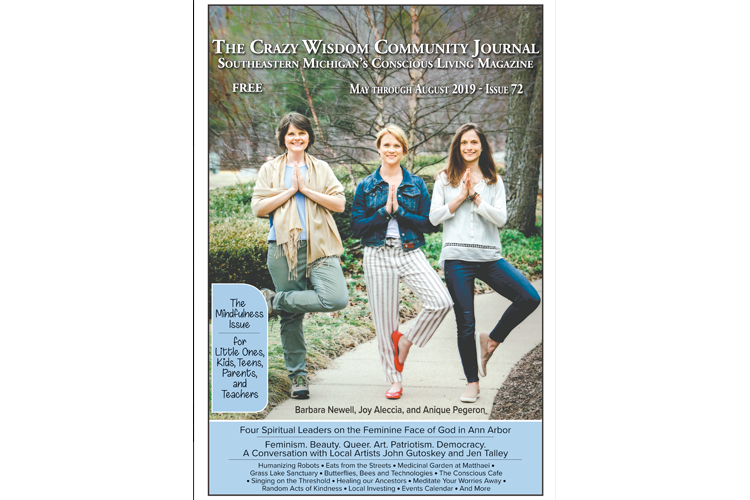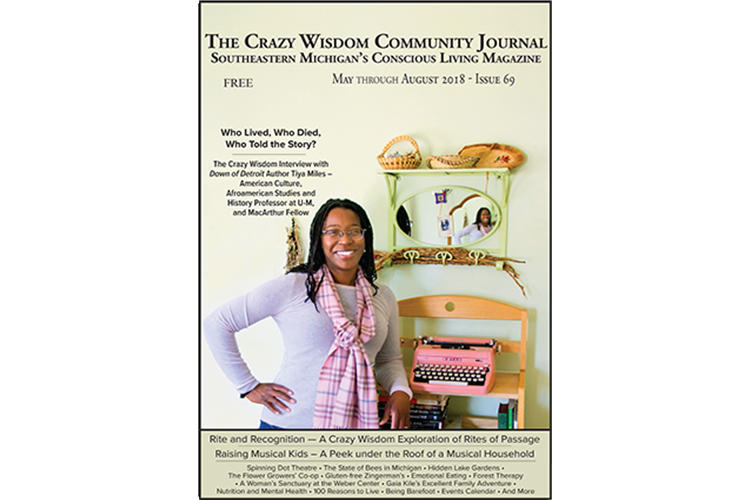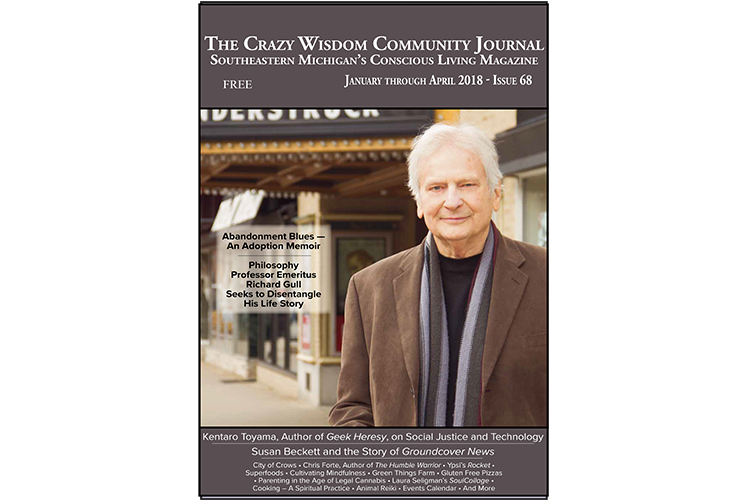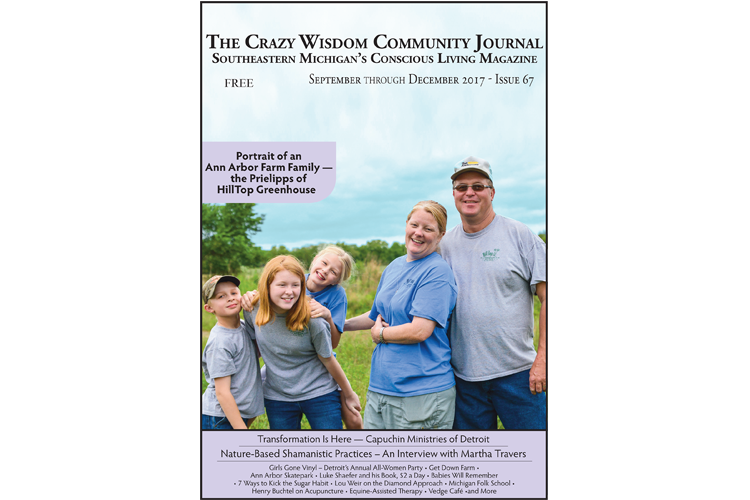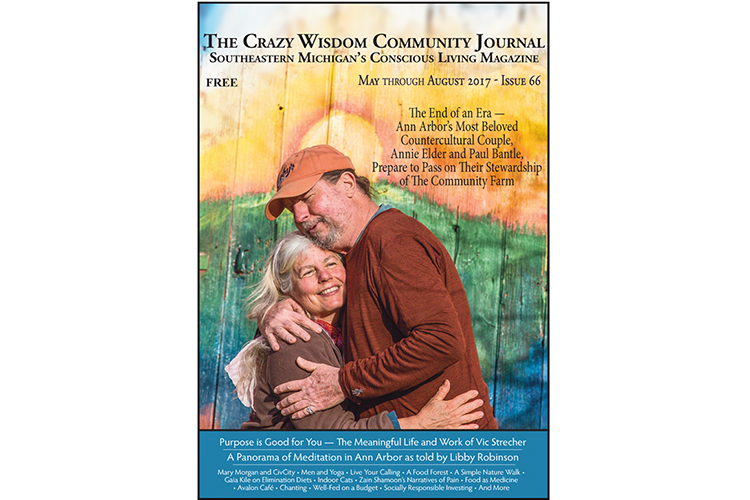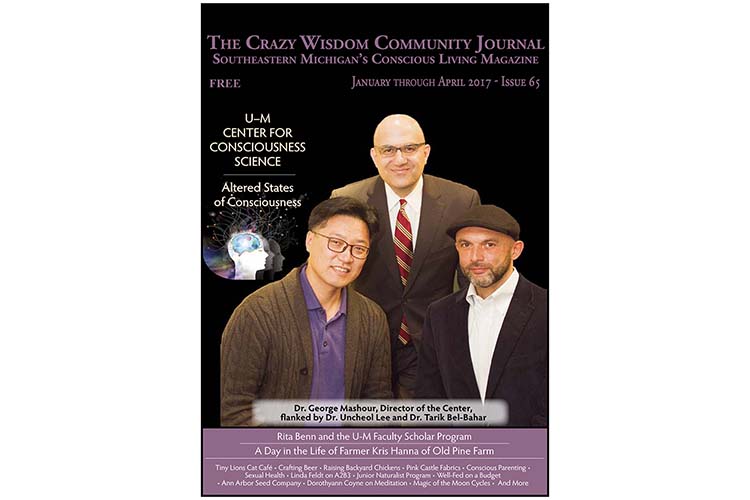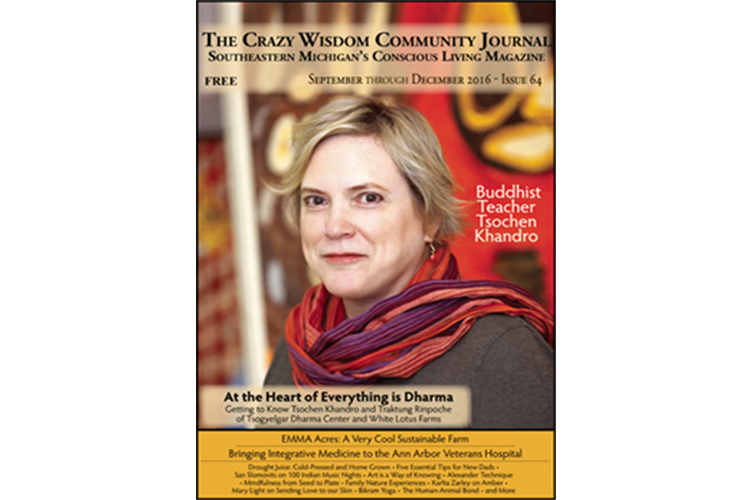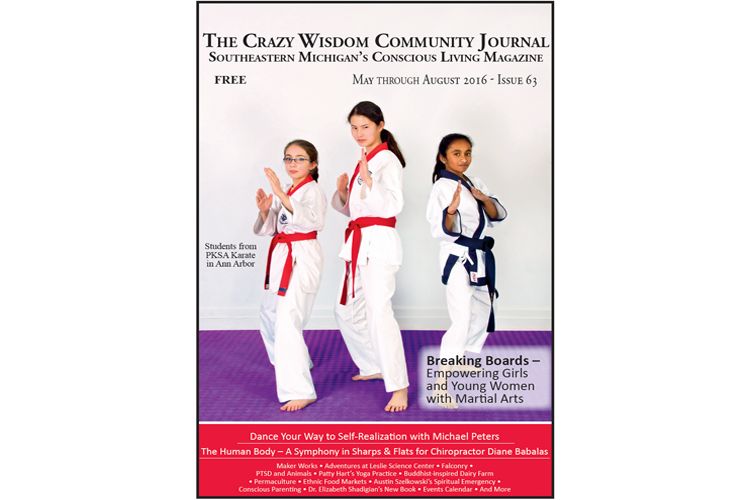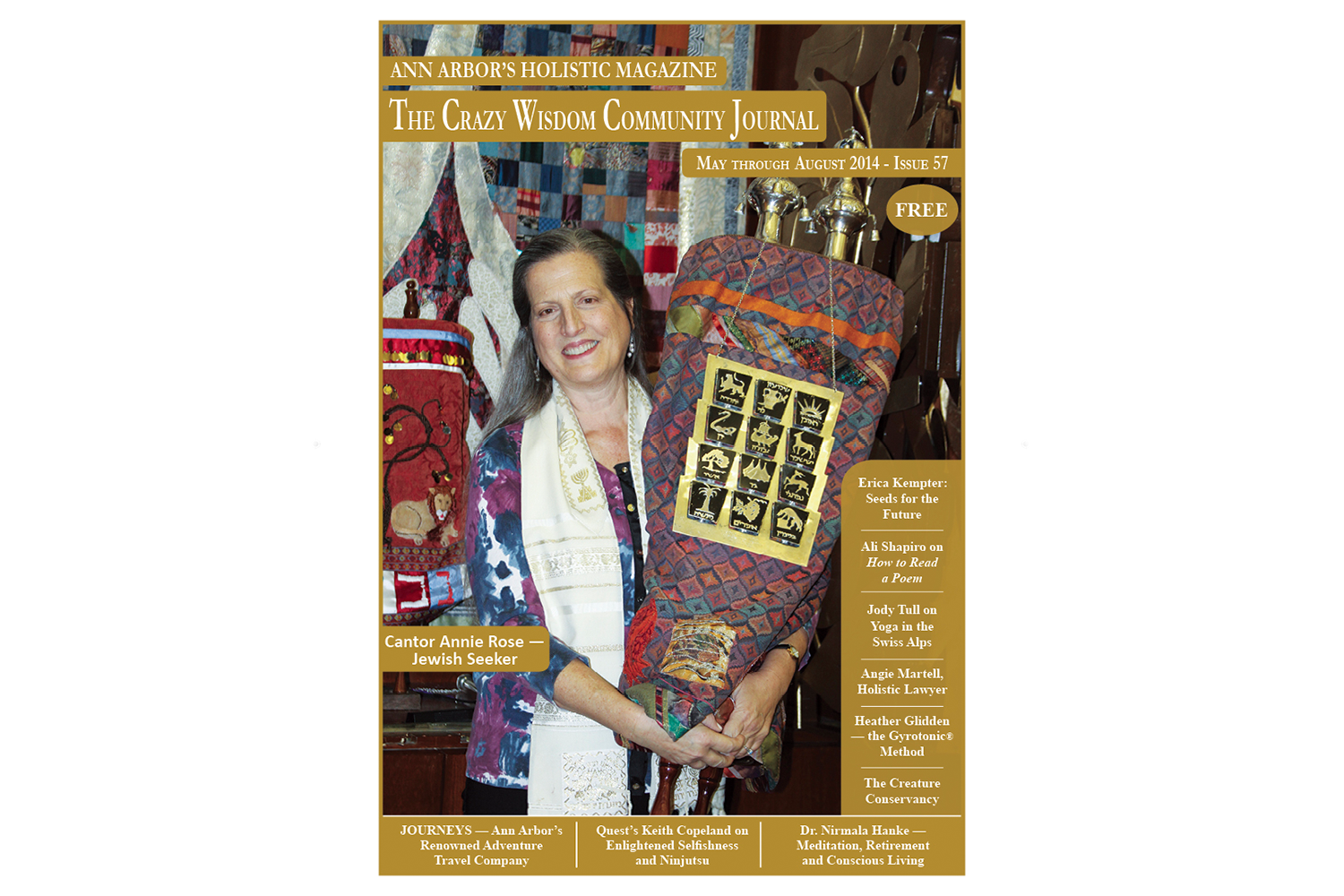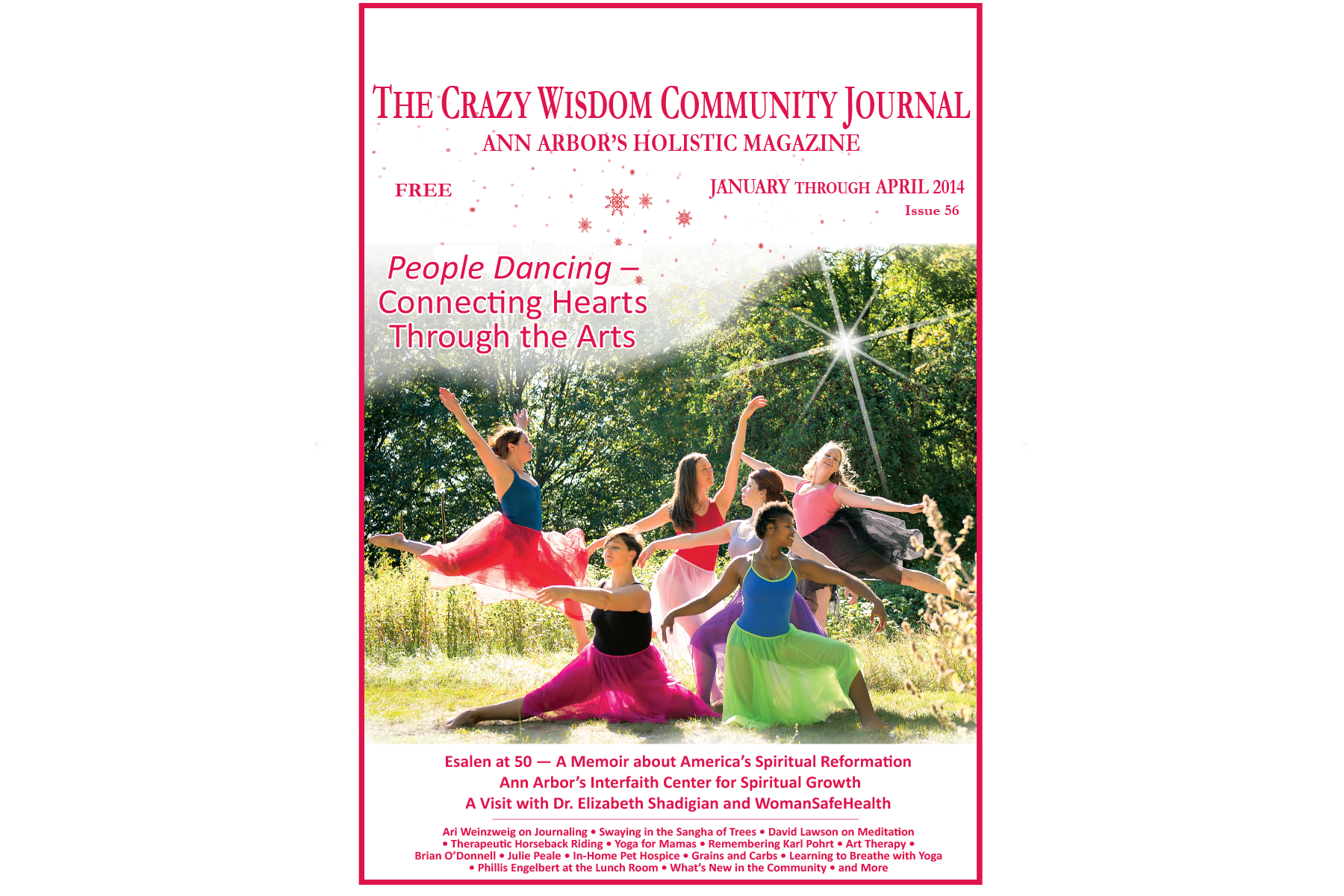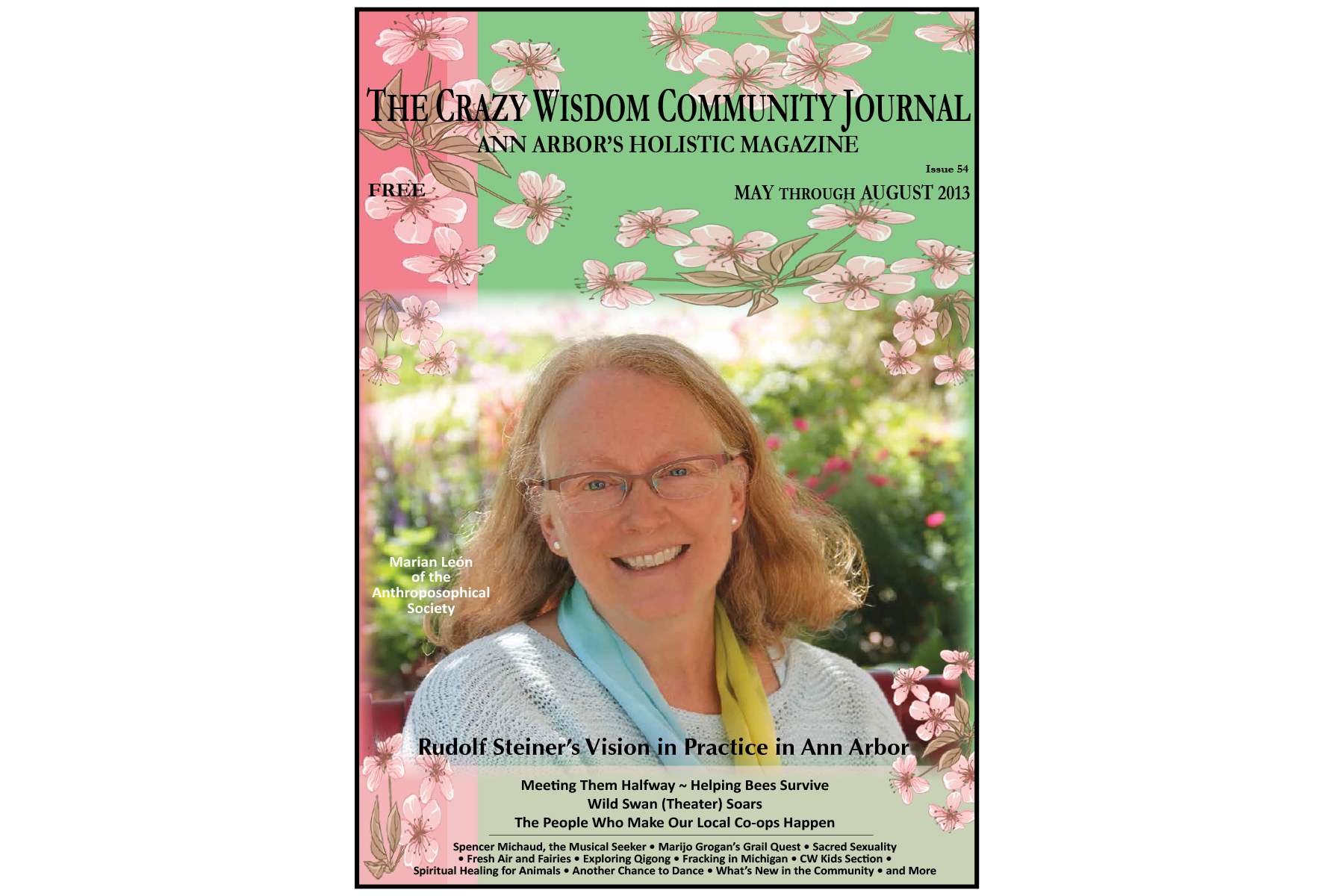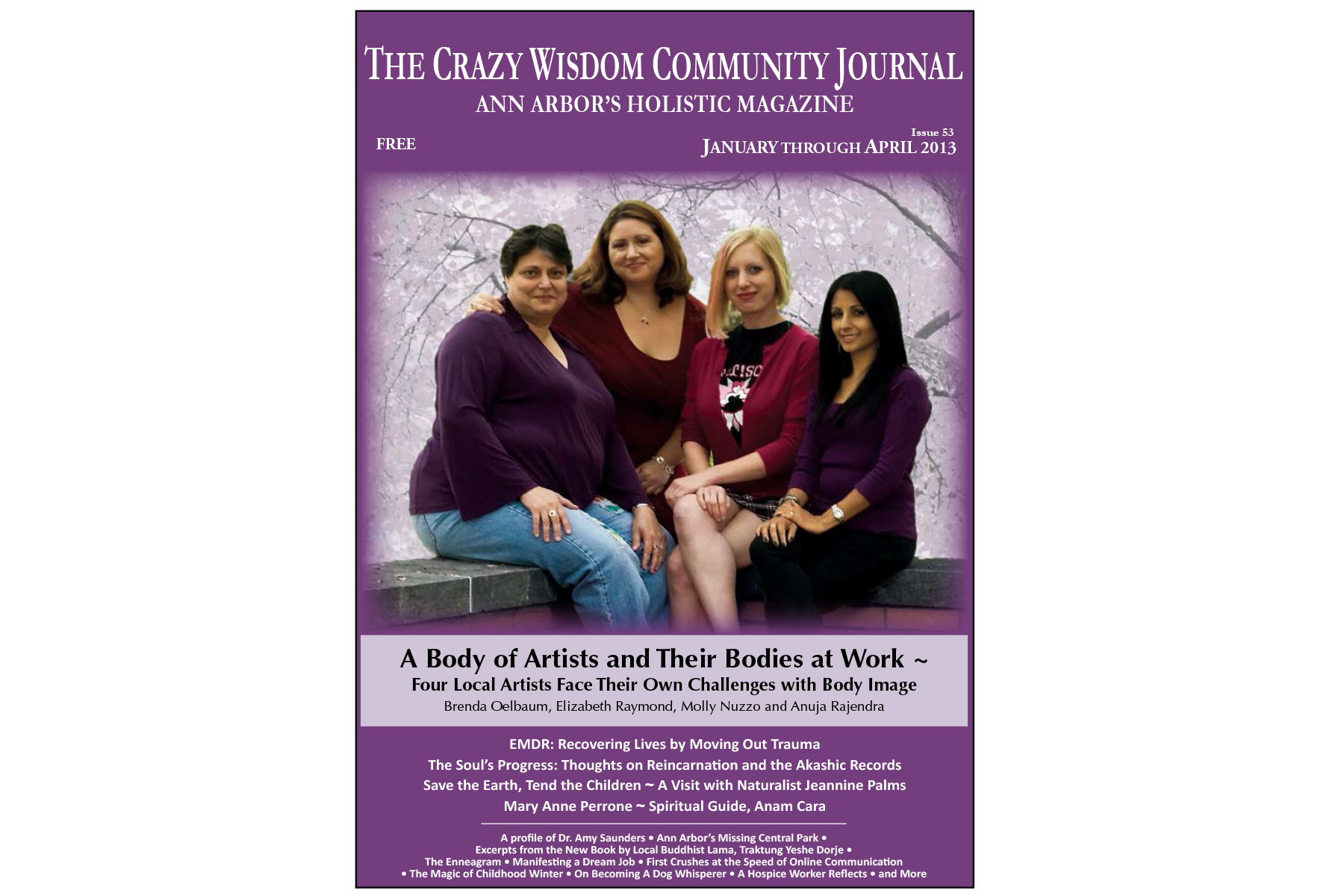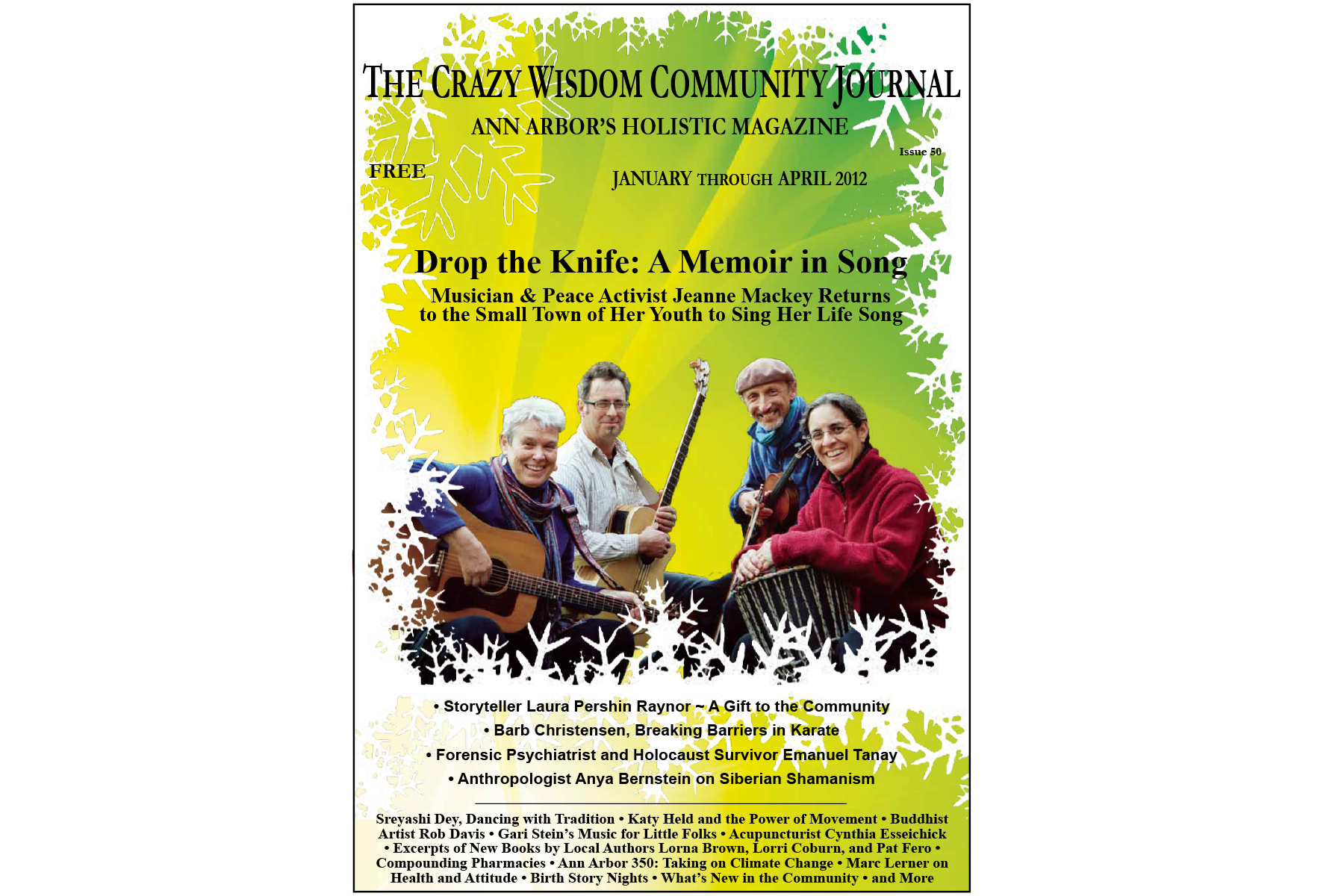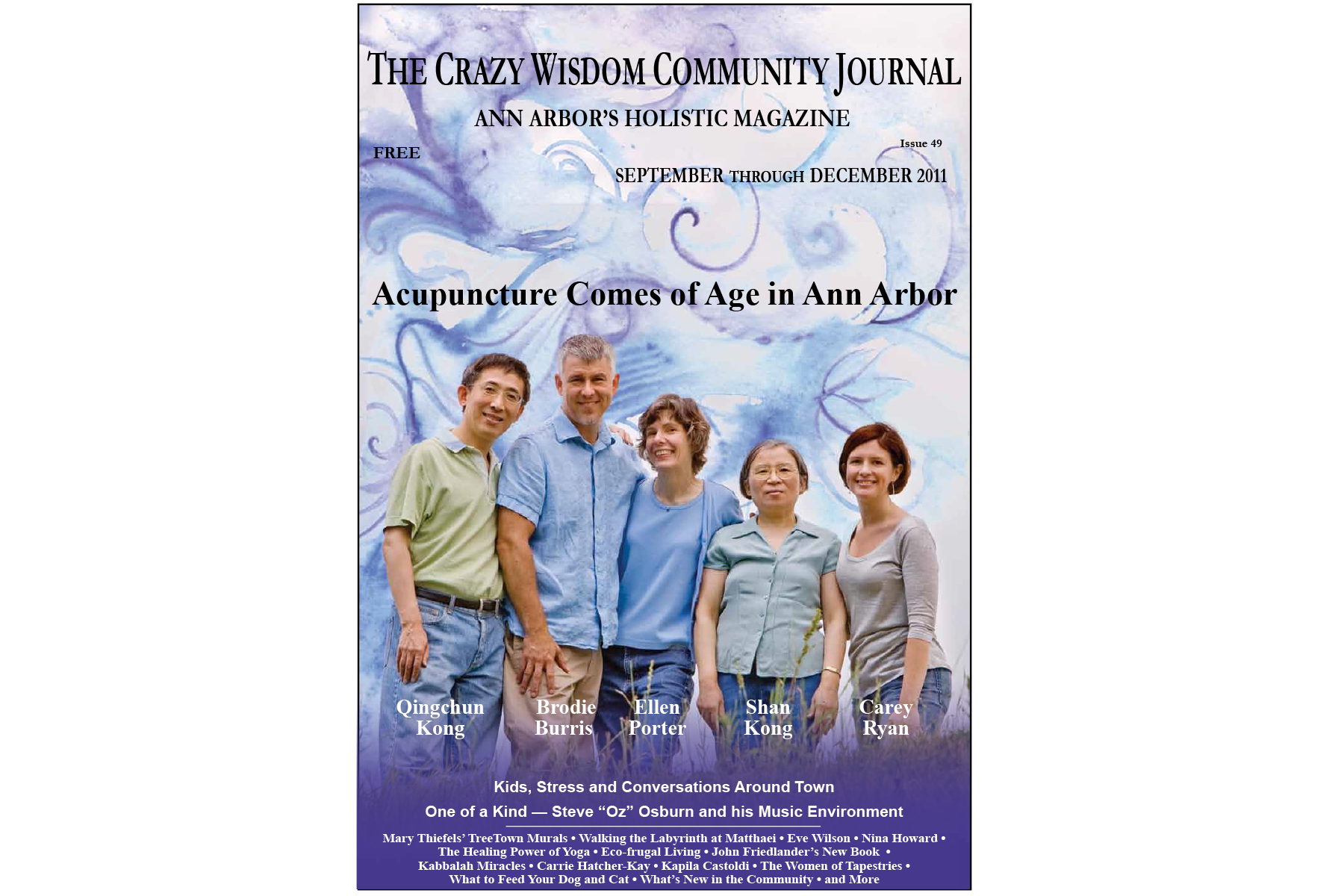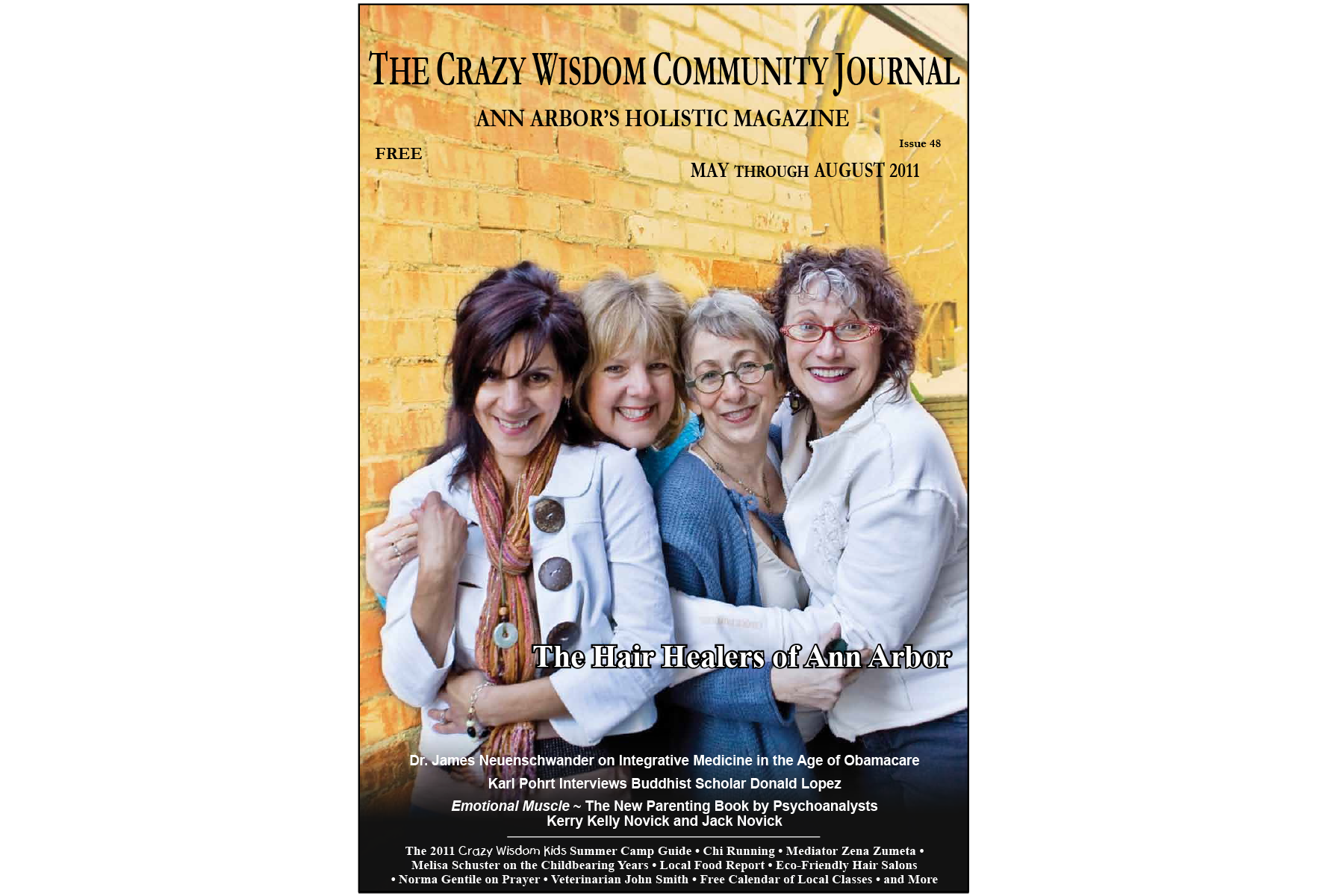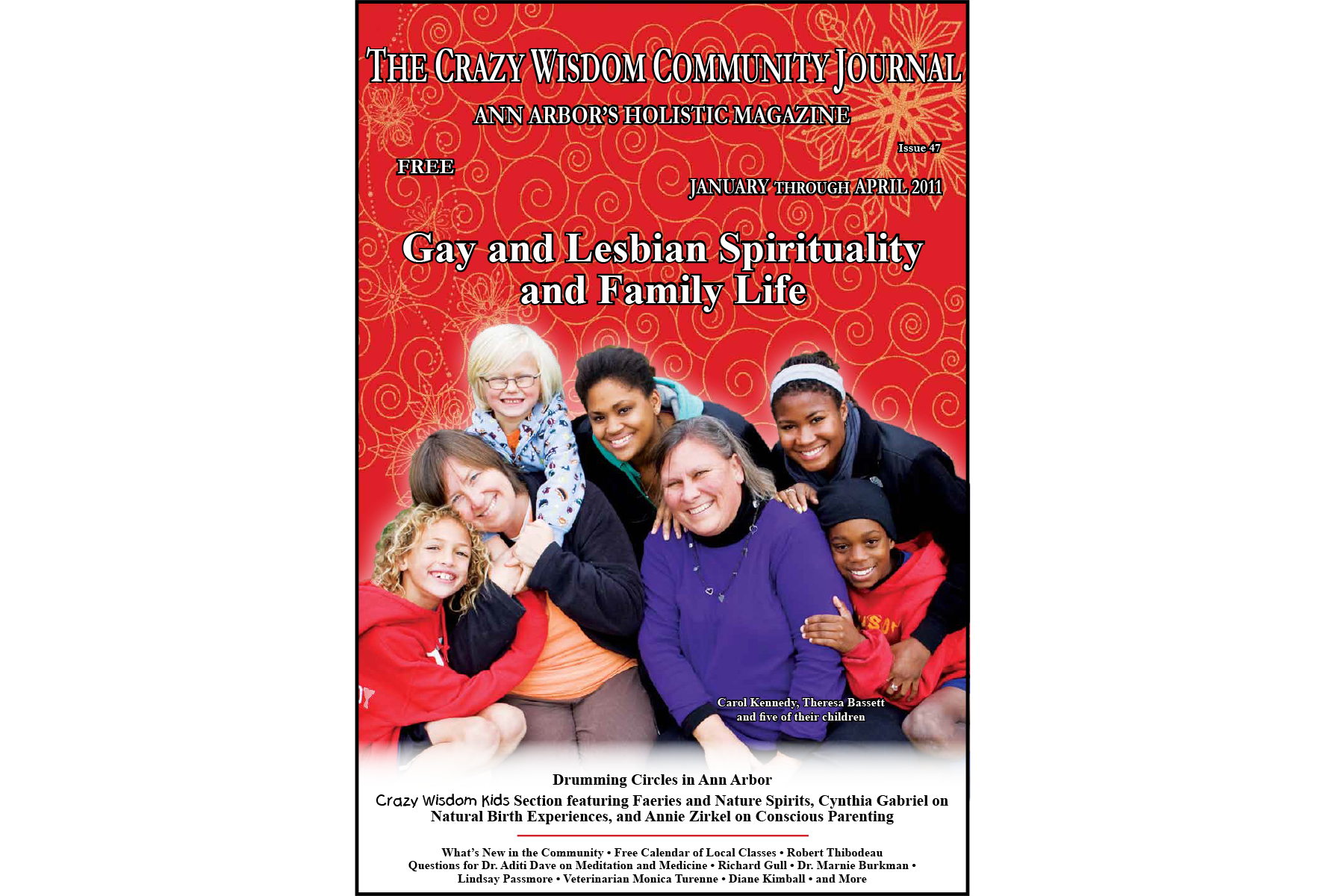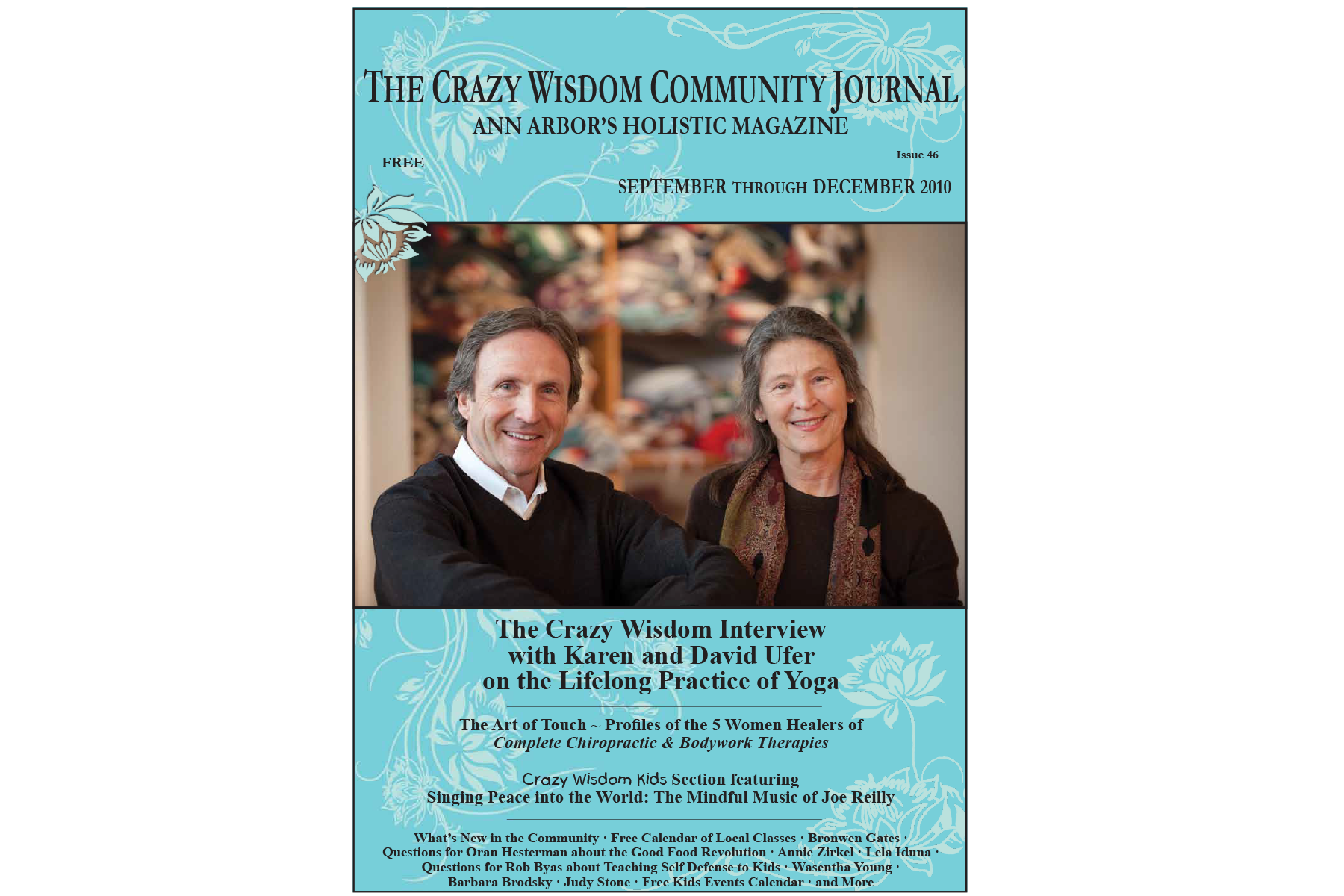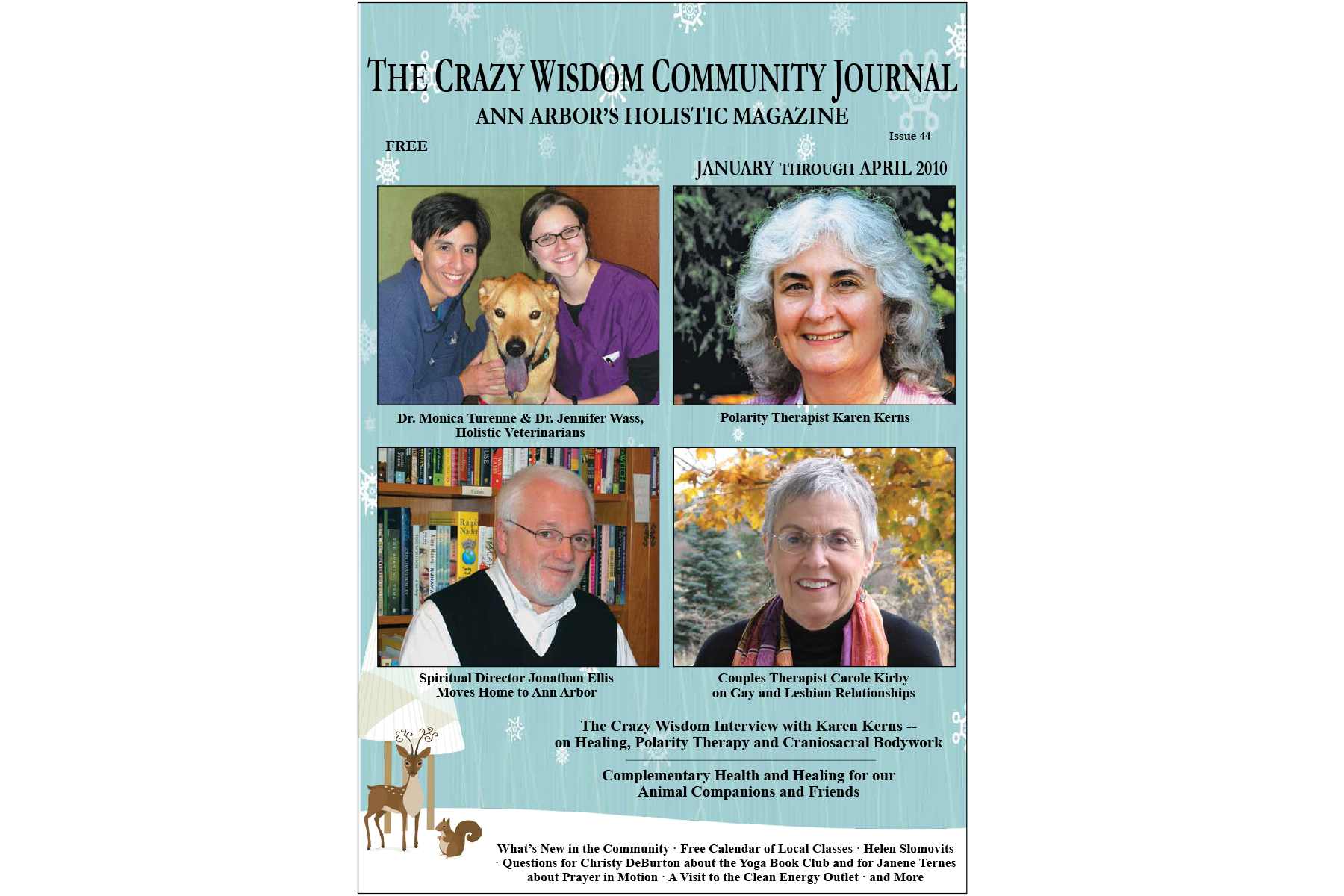The westbound traffic on Interstate 94 is at a crawl this morning and I couldn’t be happier. It’s a Wednesday and brilliant sunshine glints in my rear view mirror.
Healers of Ann Arbor: HeartMath™ with Rachel Egherman
“HeartMath™ is heart-focused breathing, or breathing through the heart space,” Rachel Egherman said of the gentle form of self-care that helps you check in with your body, your heart space, and feel supported. “This is something you can do yourself in the grocery store line. It’s a way to quickly self-regulate.”
Conscious Parenting: Mindfulness Tips Teens Wish Parents Knew
By Natalie Freeburn
As a high school mindfulness teacher, I enjoy guiding, practicing, and applying mindfulness techniques along with my students. Seeing them learn about themselves as they grow their mindfulness practice teaches me about them daily. Every year, however, my students tell me I should teach a mindfulness class for parents and guardians, too. So, I’ve asked them, what have you learned in this class that you would most like them to know? If adults can practice tuning inward and grounding themselves when they are faced with challenging situations or strong emotions, it becomes easier for us to teach our children to do the same.
Navigating Emotions
As human beings, we all experience a full range of emotions, but identifying how we feel at any given moment can be easier said than done. Of course, it’s easier to allow ourselves the space to feel emotions that are pleasant or acceptable to societal norms. What happens, though, when we’re feeling unpleasant emotions such as anger, sadness, anxiety, or boredom? When we don’t allow ourselves to feel what we feel, it can have many unintended consequences. Avoiding unpleasant feelings with cover-up behaviors is not uncommon. It can be hard to turn inward and admit what we are actually feeling and understand what those feelings are trying to tell us. Many people avoid uncomfortable feelings with distracting behaviors or negative choices. Oftentimes, people act as though they are angry, but when they look deeper, they may find they are feeling ashamed, disrespected, embarrassed, or hurt. Anger is more accessible and acceptable, especially for many boys who are told to “man up” or “don’t be a baby.” We need to be allowed to acknowledge the deeper, more vulnerable emotions. All feelings are normal, human, and okay to feel, however uncomfortable they may be. It can be helpful to think of our feelings as clouds—ever-changing, and some more pleasant than others. Some linger for a long time like the gray of a winter day; some come and go like a passing storm; some are beautifully full of color. When we are feeling unpleasant emotions, remember that eventually, like the clouds, it won’t always be this way. This can be helpful to remember when we feel stuck in an unpleasant emotion like anxiety or boredom—but leaning in to acknowledge the emotion is the first step in loosening its grip.
Accept and Allow All Feelings
One great way to utilize mindfulness is to recognize one’s emotions in order to deal with them, which is a practice Dr. Daniel Siegal calls, “Name it to Tame it.” Consider our feelings like a very excited toddler who has something important to tell you. The sweet child won’t stop begging for attention until what they are trying to say is repeated out loud. Once they are acknowledged, they feel heard, and they move on. Likewise, when we avoid acknowledging an unpleasant feeling, it tends to linger on until confronted. What we resist, persists. Therefore, model being vulnerable with your feelings around your kids. Talk about how you’re feeling, especially when you are feeling unpleasant. This act of vulnerability is not a sign of weakness but demonstrates your humanity to your kids, and it opens the doors for them to be open and vulnerable with you as well. Children and teens often hold difficult feelings inside all day when they are away from home. For many, home is often their safe space where they feel they can be themselves and still be accepted, because of this they often let it all out on the family or trusted loved ones. While this is hard and often creates tension at home, kids do this because they feel safe. As their parent, we should stay grounded, allow for some space, and then get curious about what’s really going on. Try staying calm and open, centered, taking a moment to pause before proceeding.
Power of the Pause
People typically act how they feel to some extent. When people feel right, they act right. However, when the emotions are less positive, having a personal meditation practice can help parents center themselves and avoid reacting rather than responding. Allowing time to pause when feeling annoyed, angry, or frustrated to think about how to respond rather than react out of strong emotion takes time and practice. Although hitting the pause button is difficult, kids are asked to do it all of the time. So, model this, “I’m so frustrated with your behavior right now. I need some time to cool off and then we’ll come back to it.” Or if you see your teen getting revved up, offer them time to step away for a moment. This lets our thinking brain and feelings brain reconnect; otherwise, we end up saying things that don’t work toward discovering the root of the problem.
Read related article:Where the Rubber Meets the Road: Strategies for the Emotional Challenges of Parenting — Helping Children Adjust to a New Sibling
Listen With Compassion and Without Judgment
Growing up is hard. Our teens face immense amounts of pressure to “succeed” in all areas of their lives. This pressure doesn’t only come from external sources like parents, teachers, coaches, and the media, but they are constantly comparing themselves to each other and putting additional pressure on themselves. All this while trying to figure out who they are, what they stand for, and where they fit in. It can feel hard and messy at times. From teaching, I have learned not to assume I know what’s going on in the lives of my students. Kids and teens can be very open and honest when they are given the space to say what’s on their minds without the fear of being judged or ridiculed. Try asking questions about how something might pan out to get them thinking of things they may not consider instead of judging them or offering advice. This helps them process and come to conclusions on their own and helps them build confidence in their ability to make difficult decisions.
Allow Space to “Mess Up”
We are all human. We all make mistakes. One of the top contributing factors to anxiety and students feeling hopeless is the fear of failure. Sometimes, fear is so great it prevents people from taking healthy risks such as contributing to discussions, talking to unfamiliar people, saying the wrong thing when making a phone call to schedule an appointment, or facing a challenge. A student once told me her mom calls mistakes “learning opportunities.” Wise advice! As a parent, it’s hard to see our kids struggle, and we want them to be successful and feel joy. However, we must allow our kids to feel disappointed, bored, and frustrated with low-stakes problems in life so that they may learn how to cope when life gets more challenging. When we “fix” problems for them, we rob them of the belief that they are capable of working through problems on their own. Becoming aware of how you respond to your own mistakes and how you react when your kids inadvertently mess up is more valuable. Responding with kindness, compassion, calmness, and blamelessness, allows them (and ourselves) the space to think about how to work through a mistake or problem, whether we process together or independently, can be one of the biggest gifts we can give them on how to handle the challenges they will face in adulthood.
Natalie Freeburn is a high school Family and Consumer Science, Mindfulness, and Careers in Education teacher in Saline, MI. She can be reached at freeburn@salineschools.org
Related content:
Crazy Wisdom Kids in the Community-- Mindfulness with Barbara Newell, Joy Aleccia, and Anique Pegeron
by Laura Cowan
Of all the to-dos on my mom list, the most upsetting and hilarious has to be self-care through meditation. I do actually have a supportive spouse, I work flexible hours, and I only have one kid. Still, the idea of adding one more to-do in addition to taking care of everyone around me — taking care of myself and forcing myself to calm down — is high in irony and low in fiber.
Currently I’m launching a tech blog with my husband, writing magazine articles, nursing a sick puppy, keeping up with a kid who is determined to catch every strain of flu this side of the Mississippi, and writing my twelfth novel, while planning all the family vacations… so we can relax. And… I’m one of the privileged moms who gets to choose how she spends her days. I know if you’re a single working parent or doing the stay-at-home thing instead of juggling work, you’re probably dealing with something much harder, like taking care of aging parents while raising babies.
For a parent to prioritize keeping calm is inevitably required. That’s one of the reasons mindfulness meditation is a growing trend breaking into the mainstream. It is a type of self-care that helps people, moms in particular, stop and smell the roses and refresh themselves. It’s about living in the doing instead of just another to-do.
According to Ann Arbor mindfulness coach Barbara Newell, this world we live in of thinking and improving and doing often leaves no space for feeling. Mindfulness meditation, which teaches ways to be present in daily life, is trending with parents and high-performing professionals. It helps us bridge that tendency in our culture from being carried away by thinking about all the things that need to be done to just acknowledging thoughts as they pass.
Kids are now getting into the mix as well, learning tools to cope with the stresses of school. Parents know it's harder on kids these days to keep up. Kids are seriously stressed by the load of over-scheduling and high-achieving school standards, especially in a place like Ann Arbor, where my nine-year-old can already opt into advanced math programs or take after-school activities until she drops. If I let her. I did bring her to AAPS in second grade because her smaller district wasn’t challenging her, but there is a down side to every school system as wonderful as Ann Arbor’s. I’ve learned to say no to practically everything to manage the barrage of opportunities we don’t have the energy to balance. Yes, I force self-care and balance down my family’s throats like brussel sprouts. It’s good for them. We will not be stressed out and exhausted, so help me if it’s the last thing I do. Right. Where was I?
Mindfulness meditation has recently experienced explosive growth in popularity, including in Ann Arbor, because research studies with evidence-based findings keep showing improvements across the board in people’s physical and emotional health using the practice. People are learning that mindfulness is a very simple way of connecting with a self-care routine that doesn’t require a lot of time, spiritual study, or any particular belief system.
Here’s why it works for parents and kids: mindfulness meditation isn’t a prescribed routine. It's a skill we can learn to check in with ourselves. So instead of worrying that I haven't done enough meditating today, I use this skill to check in and get real about what’s happening. “How am I feeling when the P.T.A. asked me to volunteer even though that lady I’ve never met gives me the side eye and a guy almost just ran me off the road while I was doing carpool?” I’m feeling like it might be a good night to chill out with a movie and the family and push the business accounting to tomorrow. Another burnout moment avoided. When I check in with how I feel more regularly, I don’t have a chance to get so off track trying to force myself to get everything done. My body thanks me. I have more energy. I stay healthier. Can somebody please teach my puppy mindfulness?
If it helps to get started by joining a group, there are now many sitting groups around Ann Arbor. Online sites like Mindful City Ann Arbor (mindfulcityannarbor.org) list ways to join groups in town. Several local teachers offer classes tailored to parents and kids, like at Barbara Newell’s group Grove Emotional Health Collaborative, where two different coaches work with parents and teens to create healthy routines for daily life. The experience can range from a relaxing way to end the day with a supportive group of friends to coaching that comes to you to teach kids ways to relax and stay present with themselves through stressful moments.
I sat down with a few of my favorite coaches to discuss the benefits of mindfulness and how it works. There are tons more groups around town. Happy meditating, parents. Moreover, happy saying no to the P.T.A., God bless ’em and the important work that they do.
Mindfulness for Parents
Barbara Newell works as a mindfulness coach alongside a group of therapists and one other mindfulness coach, Anique Pegeron. Newell’s study of mindfulness goes all the way back to 1974, when someone handed her Thich Nhat Hanh’s Miracle of Mindfulness. In 1992 she began attending the Zen temple in Ann Arbor and received a copy of Thich Nhat Hanh's book Touching Peace from its resident priest. Her studies would take her to living with Thich Nhat Hanh's monastic community in France for twelve years before returning to the United States.
She has a quiet peaceful way about her and sat with me in an empty room at the Grove offices on Main Street, where we added our own lamp and chairs, like a meditation circle. I could tell right away she was well-suited to this work. She carries herself like a nun who meditates at regular hours (as an Ann Arbor kid raised in Catholic school who’s known a lot of Buddhists, I’ve been around a lot of nuns).
Newell said she works with clients to identify ways they can use mindfulness in their daily lives, not as a meditation practice, but to be used while going through their routines, in order to be more present and enjoy their lives more.
What are the most common challenges for people in a mindfulness circle or coaching session? “There are a whole world of needs, tasks, and challenges,” Newell said. “We can feel caught up in the doing and lose contact with the spirit of why — the meaning of life and the expression of love for our family.”
Newell said her class on mindfulness grows out of individual coaching with parents. She said she was surprised to hear how busy parents are these days, even just the sheer amount of driving they do for their kids. There are also a growing number of anxiety disorders among kids presenting in her practice, and she seeks to help families address the stress of daily life in ways that work for them without adding one more to-do item to their list.
That’s why Newell doesn’t call her class Mindful Parenting, but Mindfulness for Parents. Parents don’t need another stressful standard for perfect parenting. It can be overwhelming enough to fit in all the things parents need to do in a day. What this class and others do is create space for parents to process their lives and reorient. With renewed awareness, they can apply their own values and priorities to their roles as parents and enjoy it.
“What can seem selfish for a moment [in taking the time for a mindfulness class] pays dividends to everyone around you if you take time for yourself so you can be more present,” she said.
Mindfulness is often taught as a two-part practice here:
1. As a sitting meditation or formal practice, a time to pause and be present. With practice, this becomes more habitual and easier to integrate into the day.
2. As an informal practice that weaves a sense of presence into the day, to pause as we do things and enjoy the moment or just be present with ourselves to witness what is going on and stay with ourselves whether we are enjoying it or not.
When we are present with ourselves, we give ourselves the opportunity to make a fresh choice in the moment of how we want to orient our focus. Do we want to look in our loved ones’ eyes and feel connection? Do we want to stop and smell the fresh air while stopped at a traffic light? Do we want to stay present with how we’re feeling and support ourselves through a difficult moment? Mindfulness is not about forcing yourself to sit on a cushion and think or breathe, Newell emphasized. In fact, one of her favorite practices is to help clients identify where their natural passions and joy in life are, and be mindful in those moments. She asks what their day is like. What do they enjoy? Is it skiing? Is it music? Being present in those moments is not a cookie cutter approach. It’s a selected focus on showing up for what’s meaningful to us personally.
Finally, Newell said it can be helpful for parents to have a group of like-minded individuals to support them and hear how challenging it can be to parent these days. Her groups are composed of many different kinds of parents, ages, and lifestyles, but her classes are often filled with working parents.
You can reach Barbara Newell at Grove Emotional Health Collaborative’s office on Main Street at www.groveemotionalhealth.com or by contacting her at barbara@groveemotionalhealth.com and (734) 224-3822 x113.
Some Relief and Go-To Techniques For Kids
I met Joy Aleccia when our daughters took yoga together for two summers. It’s one positive side effect of being in a town where kids get into the fun of mindful exercise and green living — you meet a lot of like-minded parents. Joy Aleccia co-founded Seek Wellness in Ann Arbor with her business partner Karin Elling-Gardner, a chef and registered dietician. Aleccia is a yoga therapist and Reiki master who works specifically with kids to create a holistic approach to wellness. Her offerings include coaching in mindfulness as well as nutrition, Reiki, and other healing modalities. Aleccia works often with children who are dealing with anxiety or O.C.D., ages 5 to 9, and also with local Brownie troops. What’s unique about her business is that she will come to a parent’s home to work with one or more children in their own space. This is great for families that want support without joining a group class. She said one of her greatest tasks is to blend into their space to make them comfortable while she’s teaching them ways to relax in a stressful moment.
Aleccia teaches kids simple ways they can stretch, meditate, or play games that help them feel good in the middle of their day. “We’re just strengthening your armor so you can feel better, not perfect,” she said. A veteran yoga teacher, she added, “I always include a few yoga poses because it’s another tool in the toolbox.” She shows kids poses that are designed for relaxation, such as the Rag Doll dangling pose that can calm you when you’re feeling overwhelmed. She also includes a practice of kids putting their feet up a wall while lying down and also helps them learn to breathe deeply for relaxation.
Several sessions in a row with her young clients are followed later by a refresher. Aleccia can also teach kids how to ground using visualization techniques that are super simple, such as helping them imagine themselves as a tree with roots reaching down into the ground. This helps orient them in the present and stay with themselves during stressful moments.
Aleccia says that one of the keys to mindfulness she picked up in a TED talk, where the speaker talked about how if you take the stairs instead of the elevator and your legs start burning, your heart rate elevates, you’re not thinking, “Oh no, I’m taking the stairs wrong.” It’s just a new experience of a different way to get upstairs that comes with new sensations, and we know this intuitively. When we meditate, we tend to judge ourselves too soon and think that we are no good at it. People tend to talk themselves out of mindfulness meditation because they think they’re doing it wrong, Aleccia said. Kids don’t have that expectation, so it can be easier to work with them and their willingness to try a new experience.
Joy Aleccia is reachable for in-home meeting and office visits at her website www.a2seekwellness.com, by phone at (734) 274-5310, and by email at contact@a2seekwellness.com.
Mindfulness for Teens
Mindfulness coach Anique Pegeron grew up in Ann Arbor, so she knows all about the high expectations and packed schedules we value. When Pegeron was in high school, she was told “calm down” or “pay attention” with very little instruction as to how to do that. Her inspiration came from wanting to create a better method for teens today to learn how to process the pressures of life with a road map for relaxation and self-care. Pegeron started with mindfulness summer camps for kids at County Farm Park, a program she still runs from her website Mindful World (mindful-world.com). It is focused on nature, games, yoga, creating community, and teaching small ways kids can practice mindfulness for their own benefit.
The next logical step was to extend the programs to teens, Pegeron said, through her Right Now Mindfulness and Yoga for Teens class. She prepared for her coaching with a program in California called Mindful Schools (mindfulschools.org) where mindfulness was already big a few years back, and added that on to her bachelor’s in psychology and master’s in education. She realized that families wanted to learn more about mindfulness as it went mainstream.
Pegeron also works at Grove Emotional Health Collaborative. She said it’s great to be a coach that works with teens looking for tips to cope with daily life. It allows her to support them with the latest offerings from the mindfulness movement. She also loves helping them learn that in a society that encourages seeking healing externally, mindfulness can help us seek what we need internally. This can be great for building self-esteem and resourcefulness throughout life.
“It’s not about getting it right or doing it one way,” she said. Pegeron works with teens to find their best way to connect with themselves in the midst of a lot of pressure to succeed or organize their lives, so they stay in touch with what is really important to them and know they have the resources internally to succeed. “The road within is there for all of us but is blocked,” she said. “[This helps] remove the barriers.”
Pegeron said her education in Ann Arbor was great, but it filled her mind with a lot of information instead of giving her instruction about the nature of her mind. She believes that because Ann Arbor is a high-achieving town, mindfulness is having its moment here, and we really need these tools to deal with pressure.
One of her best tips to understand mindfulness is this: treat yourself like you would treat a friend. She is teaching more these days on mindful self-compassion, she said, because we tend to be so much harder on ourselves than we are on others. Learning to pay attention to how we treat ourselves can make all the difference in creating a balanced life.
Pegeron seconds the idea that mindfulness suits Ann Arbor because of the scientific research backing it up as more than a spiritual practice. It’s completely nondenominational, which means it works not only for people whose focus and lifestyle orients around scientific process but also for people who are religious but don’t want to practice any kind of meditation that combines their spiritual practices with those of another religion. For some, mindfulness opens up the path to other spiritual practices that might benefit them. For others, it’s a simple tool that excludes spiritual practice, which can be a relief for those who are non-religious or recovering from religious abuse.
So what happens when you don’t want to be present with discomfort and befriend your own experience? Pegeron said it’s about befriending yourself in whatever situation you find yourself, not numbing out and creating an overwhelm, because, she said, what we resist persists. “Can you learn to befriend your own emotions, knowing they’re part of human experience,” even when they’re not comfortable? Pegeron said this is preferable to avoiding discomfort, because that often leads to situations piling up on us. In fact, she said, mindfulness helps us sharpen our discernment of uncomfortable situations and mind-spinning stories we tell ourselves about our experiences and blame ourselves or blame others. When we train ourselves to be mindful of our experiences, we can help ourselves sift away the narratives to an underlying essence of what feels authentic to us. We can practice an experimental sort of thinking about our experiences, instead of resorting to life and death thinking.
Pegeron said that cultures who cultivate mindfulness value thinking as much as our society does, but they also value intuition, a deeper subconscious type of thinking that values emotions as signals of what is happening to us and what decisions we feel we need to make. Healing doesn’t just come from understanding what is happening to us, but from listening to and feeling emotion and seeing if it speaks to us. This can build resilience, but it can also be challenging and leave us feeling uncomfortably raw with feeling so much for a while. Groups and classes can help people see the common experience we all have with these things and normalize people’s experience of growth.
Anique Pegeron works through the Grove Emotional Health Collaborative and can also be reached at her website www.mindful-world.com. She is a certified Mindful Schools instructor at www.mindfulschools.org/resources/certified-instructor/name/anique-pegeron/.
In Conclusion, Darn It
Truth time: I don’t know a single parent, myself included, who feels they have this balance thing licked. I know one woman dealing with having to find new housing while sorting out her career after a cross-country move, and it’s tearing her up. Another friend found a new job only to have to testify against her new boss. A third friend is helping her teen through mental health challenges while raising younger babies, and it’s wrecked her health. Out sick from school, my daughter’s stress brought her to tears even though she has a supportive teacher who is happy to catch her up. Where did we get this idea that we have to keep going and be perfect even when it’s absurd? I hope I didn't teach her that, though my schedule disagrees.
For myself, I have added mindfulness into a daily routine when I can remember, but I’ve also benefited greatly from moving meditation when I need to work off the stress instead. Walking, swimming, tai chi, and similar exercise has become my go-to. And that supportive family of mine insists I stick to it, because I really do start to fall apart when I don't keep up with self-care.
Mindfulness meditation is a tool I reach for when life is too much. It won't add another burden to my list of beautiful things I have actually chosen to do. I love my work. I love this family. I love this town. And I love not being burned out. Blessings that you find your balance as well.
